#kidarites
Photo
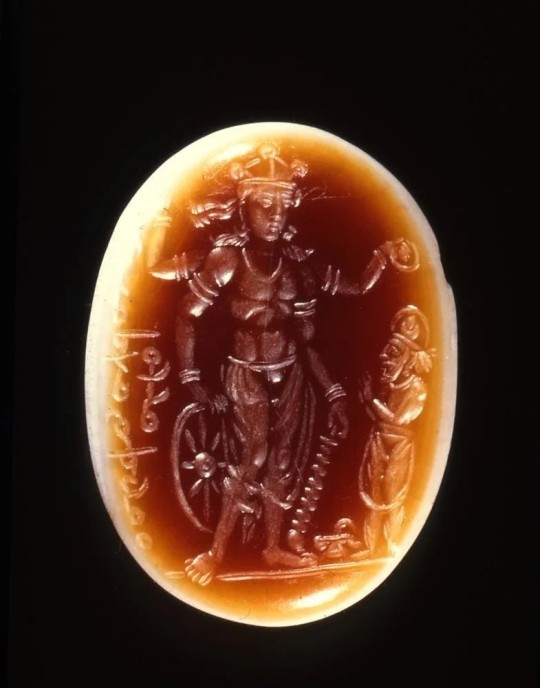
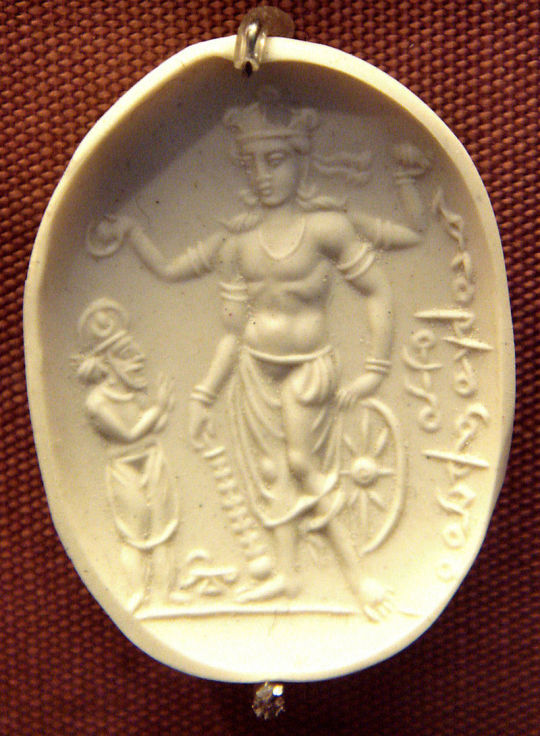
Kushano-Sasanian or Kidarite seal, 4th or 5th c.,inscribed in Bactrian and showing a dignitary worshipping Vasudeva-Vishnu, from Gandhara
419 notes
·
View notes
Photo
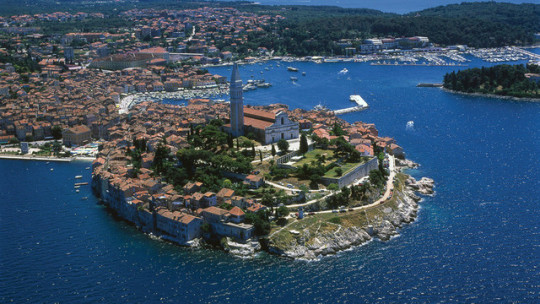




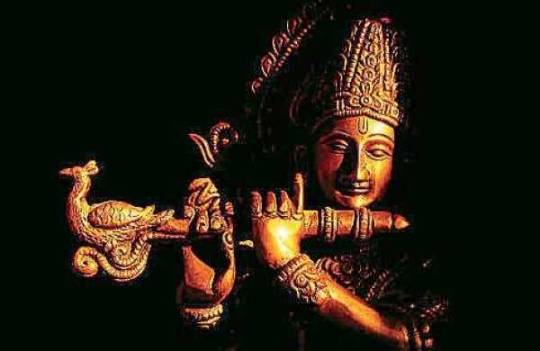
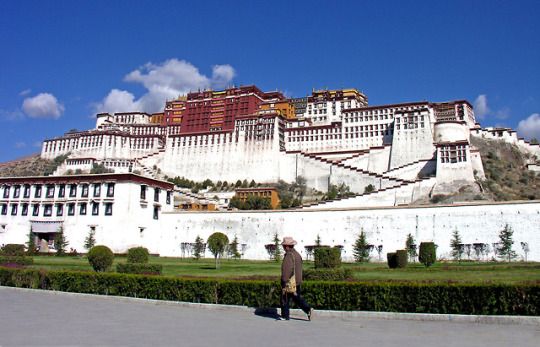



Gita is Krishnas Gift to Humanity
“Bhagavad Gita, also called the ‘holy song of the Lord’, is a gift given to the human society from Lord Sri Krishna to direct them towards seeking the higher goals of life...Bhagavad Gita can be compared to an intelligence agency. The word ‘intelligence’ means ‘inside information’. Any agency which has inside information about certain facts is an intelligence agency. Every country in this world has some intelligence agencies...All these agencies have access to information which common people do not have. Similarly, Bhagavad Gita gives us access to a range of inside information.
When Bhagavad Gita was spoken...Arjuna was a prince warrior, a householder with wife and children, having responsibilities of ruling the kingdom. However, Lord Krishna chose Arjuna to speak Bhagavad Gita...was spoken in the midst of the most gruesome impending war. Lord Krishna, however, chose to speak Bhagavad Gita in that situation by postponing the war.”

”[A] great warrior like Arjuna couldn’t tolerate even the insinuation of desertion and the cowardice it implied. Discouragement and internal state of mind had the power to take such a great hero to such a terrible state. Whether it is depression, dejection, or disheartenment—discouragement is one of our extremely dangerous enemies. For Arjuna even the thought of deserting and leaving the war was unconscionable.
Ralph Waldo Emerson says, “I owed a magnificent day to the Bhagavad Gita. It was the first of books; it was as if an empire spoke to us, nothing small or unworthy, but large, serene, consistent, the voice of an old intelligence which in another age and climate had pondered and thus disposed of the same questions which exercise us.”
(via Gita is krishna’s gift to humanity- The New Indian Express)

Bhagavad Gita
“The Bhagavad Gita often referred to as the Gita...is set in a narrative framework of a dialogue between Pandava prince Arjuna and his guide and charioteer Krishna...Arjuna is filled with moral dilemma and despair about the violence and death the war will cause. He wonders if he should renounce and seeks Krishna's counsel, whose answers and discourse constitute the Bhagadvad Gita... The setting of the Gita in a battlefield has been interpreted as an allegory for the ethical and moral struggles of the human life.
The Gita in the title of the text "Bhagavad Gita" means "song"...the title has been interpreted as "the Song of God"..."the Song of the Lord", "the Divine Song", and "the Celestial Song"...the Bhagavad Gita suggests that it was composed in an era when the ethics of war were being questioned and renunciation to monastic life was becoming popular. Such an era emerged after the rise of Buddhism and Jainism in the 5th-century BCE...the first version of the Bhagavad Gita may have been composed in or after the 3rd-century BCE.”

Greco-Buddhism
“Greco-Buddhism, or Graeco-Buddhism, is the cultural syncretism between Hellenistic culture and Buddhism, which developed between the 4th century BC and the 5th century AD in Bactria and the Indian subcontinent. It was a cultural consequence of a long chain of interactions begun by Greek forays into India from the time of Alexander the Great...Greco-Buddhism continued to flourish under the Greco-Bactrian Kingdom, Indo-Greek Kingdoms, and Kushan Empire. Buddhism was adopted in Central and Northeastern Asia from the 1st century AD, ultimately spreading to China, Korea, Japan, Siberia, and Vietnam.
Greco-Bactrian Kingdom (250–125 BC)...were followed by the Indo-Greek Kingdom (180 BC – AD 10). Even though the region was conquered by the Indo-Scythians and the Kushan Empire (1st–3rd centuries AD), Buddhism continued to thrive.Buddhism in India was a major religion for centuries until a major Hindu revival from around the 5th century, with remaining strongholds such as Bengal largely ended during the Islamic invasions of India. The length of the Greek presence in Central Asia and northern India provided opportunities for interaction, not only on the artistic, but also on the religious plane.”
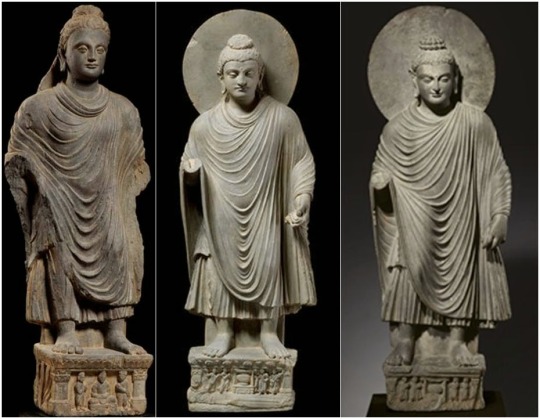
“According to Ptolemy, Greek cities were founded by the Greco-Bactrians in northern India...A large Greek city built by Demetrius...at the archaeological site of Sirkap...where Buddhist stupas were standing side-by-side with Hindu and Greek temples, indicating religious tolerance and syncretism...In many parts of the Ancient World, the Greeks did develop syncretic divinities, that could become a common religious focus for populations with different traditions...Many of the stylistic elements in the representations of the Buddha point to Greek influence...Greek artists were most probably the authors of these early representations of the Buddha, in particular the standing statues, which display "a realistic treatment of the folds and on some even a hint of modelled volume that characterizes the best Greek work.
Intense westward physical exchange at that time along the Silk Road is confirmed by the Roman craze for silk from the 1st century BC to the point that the Senate issued, in vain, several edicts to prohibit the wearing of silk, on economic and moral grounds...also wrote about Indo-Greek Buddhist king Menander, confirming that information about the Indo-Greek Buddhists was circulating throughout the Hellenistic world.”
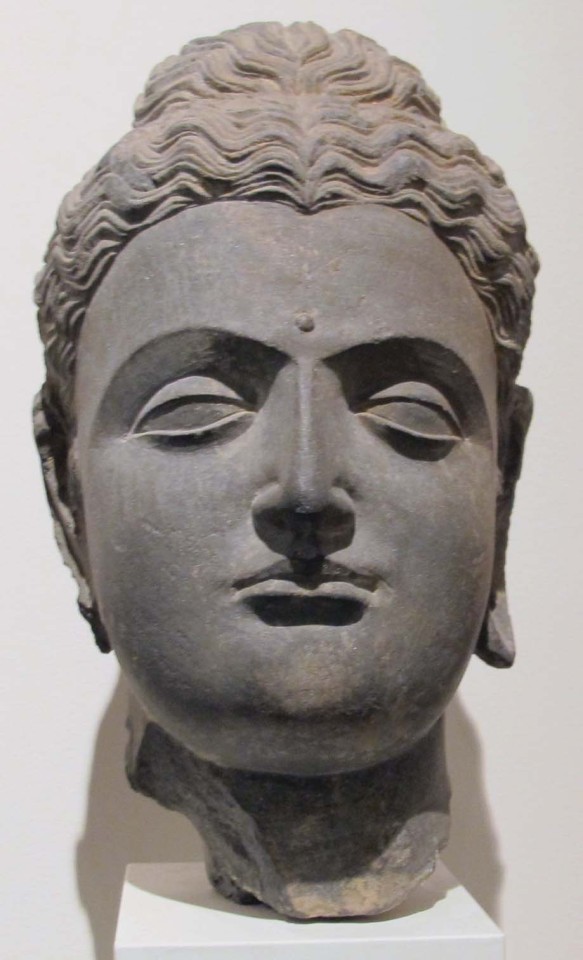
“Although the philosophical systems of Buddhism and Christianity have evolved in rather different ways, the moral precepts advocated by Buddhism from the time of Ashoka through his edicts do have some similarities with the Christian moral precepts developed more than two centuries later: respect for life, respect for the weak, rejection of violence, pardon to sinners, tolerance.One theory is that these similarities may indicate the propagation of Buddhist ideals into the Western World, with the Greeks acting as intermediaries and religious syncretists.”
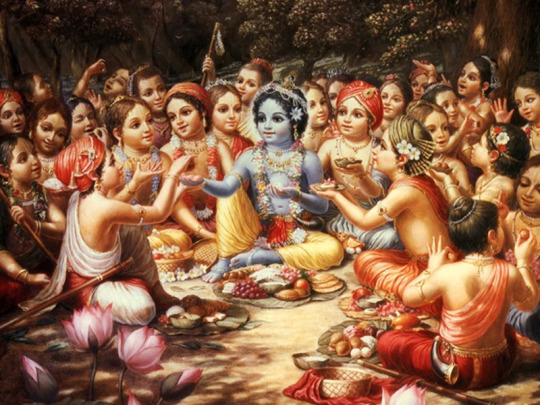
Hinduism
“Hinduism is the world’s oldest religion, according to many scholars, with roots and customs dating back more than 4,000 years. Today, with about 900 million followers, Hinduism is the third-largest religion behind Christianity and Islam. Roughly 95 percent of the world’s Hindus live in India...Hindus revere all living creatures and consider the cow a sacred animal.Food is an important part of life for Hindus. Most don’t eat beef or pork, and many are vegetarians.Hinduism is closely related to other Indian religions, including Buddhism, Sikhism and Jainism.
Around 1500 B.C., the Indo-Aryan people migrated to the Indus Valley, and their language and culture blended with that of the indigenous people living in the region...The concept of dharma was introduced in new texts, and other faiths, such as Buddhism and Jainism, spread rapidly...In the 7th century, Muslim Arabs began invading areas in India. During parts of the Muslim Period, which lasted from about 1200 to 1757, Hindus were restricted from worshipping their deities, and some temples were destroyed. Saints expressed their devotion through poetry and songs.”
(via Hinduism | History Channel)

Ariana
“Ariana, the Latinized form of the Ancient Greek Ἀρ(ε)ιανή Ar(e)ianē (inhabitants: Ariani; Ἀρ(ε)ιανοί Ar(e)ianoi), was a general geographical term used by some Greek and Roman authors of the ancient period for a district of wide extent between Central Asia and the Indus River, comprising the eastern provinces of the Achaemenid Empire that covered the whole of modern-day Afghanistan, as well as the easternmost part of Iran and up to the Indus River in Pakistan (former Northern India).
The Greek term Arianē (Latin: Ariana), a term found in Iranian Avestan Airiiana- (especially in Airyanem Vaejah, the name of the Iranian peoples' mother country). The modern name Iran represents a different form of the ancient name Ariana which derived from Airyanem Vaejah and implies that Iran is “the” Ariana itself – a word found in Old Persian – a view supported by the traditions of the country preserved in the Muslim writers of the ninth and tenth centuries. The Greeks also referred to Haroyum/Haraiva (Herat) as 'Aria', which is one of the many provinces found in Ariana.
The names Ariana and Aria, and many other ancient titles of which Aria is a component element, are connected with the Avestan term Airya-, and the Old Persian term Ariya-, a self designation of the peoples of Ancient India and Ancient Iran, meaning "noble", "excellent" and "honourable".”

Aria (region)
“Aria is an Achaemenid region centered on the city of Herat in present-day western Afghanistan. In classical sources, Aria has been several times confused with the greater region of ancient Ariana, of which Aria formed a part. Aria was an Old Persian satrapy, which enclosed chiefly the valley of the Hari River... which in antiquity was considered as particularly fertile and, above all, rich in wine. The region of Aria was separated by mountain ranges...in the east...west...north... while a desert separated it...in the south...Its original capital was Artacoana or Articaudna according to Ptolemy. In its vicinity, a new capital was built, either by Alexander the Great himself or by his successors, Alexandria Ariana, modern Herat in northwest Afghanistan.”

Arya (Buddhism)
“Arya is a term frequently used in Buddhism that can be translated as "noble", "not ordinary", "valuable", "precious", "pure", etc. Arya in the sense of "noble" or "exalted" is frequently used in Buddhist texts to designate a spiritual warrior or hero.
The word "noble," or ariya, is used by the Buddha to designate a particular type of person, the type of person which it is the aim of his teaching to create. In the discourses the Buddha classifies human beings into two broad categories. On one side there are the puthujjanas, the worldlings, those belonging to the multitude...On the other side there are the ariyans, the noble ones, the spiritual elite, who obtain this status not from birth, social station or ecclesiastical authority but from their inward nobility of character....In Chinese Buddhist texts, ārya is translated as 聖 approximately, "holy, sacred"

Getes – the story to be told – Quotes
“The Spanish Chronicles...“The Daco-Getes are considered to be the founders of the Spaniards.”...The Chronicle of the Dukes of Normandy...“The Daco-Getes are considered to be the founders of the nordic nations.”...Collectanea Etymologica...“The Daco-Getes are considered to be the founders of the Teutons and Frisians, of the Dutch and Anglians.”...Cavasius (The Administration of the Kingdom of Transylvania): “In Italy, Spain and Galia, the peoples used to spoke an idiom of an older formation under the name of Rumanian language, as in the time of Cicero. The Rumanian language has more latinity than Italian.”
Bonaventura Vulcannius of Bruges, 1597: “The Getes had their own alphabet long before the Latin one was born. The Getes sang, using the flute, the deeds of their heroes, composing songs even before the foundation of Rome, that of which Cato says – the Romans started to do much later.”...Carolus Lundius...“It has to be clear for everyone, the ones who antiquity named them with a distinguished admiration Getes, the writers named them afterwards, through a unanimous agreement, Goths. The Greeks and other nations took letters from the Getes. We find with Herodotus and Diodorus, direct opinions about the spreading of these letters.”

“GET (pronounced ‘Jet’) = Earth-born. In Rumanian, the word ‘gețuitor’ (viețuitor) means ‘living man’. Earth = Geea/Gaia (Geb/Gebeleizis)...Djed = The forefathers of the first pharaohs of Egypt. Egyptians use this word Djed (pronounced ‘Jet’) when they speak of the ‘old ones’ that lived before them. Therefore this term has to do, not only with the Greeks. In Croatian the word ‘đed’ (pronounced ‘Jed’) means ‘grandfather’, which is another proof that the word ‘Get’ bears the meaning of ‘Old/Ancient’.
[T]he term ‘Gitia’ we have as a reconfirmation of the sacrality of its name, the Vedic opera Bhagavad Gītā (pronounced ‘Geeta’) which means ‘Song of the Lord’ or ‘Divine Song’ that speaks about the noble Aryans (‘Deva’ or ‘Devi’ meaning ‘The Divine’) which invaded the rich land of India...GETO = ‘The Brilliant’ or ‘The Divine’ or ‘The Wolves’, but they also have the meaning of ‘inhabitants of Davas’, where ‘Dava’ = ‘Fortress’. All these terms are in fact epithets that describe the Getes...The exonyms ‘Dac’/’Daki’ were used by the Romans to describe the Getes.”
(via Getes – the story to be told – Quotes | Vieille Europe blog)

Getae
“The Getae, or Gets (Ancient Greek: Γέται, singular Γέτης) were several Thracian tribes that once inhabited the regions to either side of the Lower Danube, in what is today northern Bulgaria and southern Romania. Both the singular form Get and plural Getae may be derived from a Greek exonym: the area was the hinterland of Greek colonies on the Black Sea coast, bringing the Getae into contact with the ancient Greeks from an early date. Several scholars, especially in the Romanian historiography, posit the identity between the Getae and their westward neighbours, the Dacians.
There is a dispute among scholars about the relations between the Getae and Dacians, and this dispute also covers the interpretation of ancient sources. Some historians such as Ronald Arthur Crossland state that even Ancient Greeks used the two designations "interchangeable or with some confusion". Thus, it is generally considered that the two groups were related to a certain degree, the exact relation is a matter of controversy.”

Geats
“The Geats (/ˈɡiːts/, /ˈɡeɪəts/ or /ˈjæts/) (Old English: gēatas)...sometimes called Goths, were a North Germanic tribe who inhabited Götaland ("land of the Geats") in modern southern Sweden during the Middle Ages...Beowulf and the Norse sagas name several Geatish kings, but only Hygelac finds confirmation in Liber Monstrorum where he is referred to as "Rex Getarum"...Some decades after the events related in this epic...described the Geats as a nation which was "bold, and quick to engage in war"...The Hervarar saga is believed to contain such traditions handed down from the 4th century. According to that work, when the Hunnish Horde invaded the land of the Goths and the Gothic king Angantyr desperately tried to marshal the defenses, it was the Geatish king Gizur who answered his call, though there is no actual evidence of a successful invasion.
There is a hypothesis that the Jutes also were Geats, and which was proposed by Pontus Fahlbeck in 1884. According to this hypothesis the Geats would have not only resided in southern Sweden but also in Jutland, where Beowulf would have lived...Gēatas is the Old English form of Old Norse Gautar and modern Swedish Götar...in Beowulf, the Gēatas live east of the Dani (across the sea) and in close contact with the Sweon, which fits the historical position of the Geats between the Danes/Daci and the Swedes. Moreover, the story of Beowulf, who leaves Geatland and arrives at the Danish court after a naval voyage, where he kills a beast, finds a parallel in Hrólf Kraki's saga. In this saga, Bödvar Bjarki leaves Gautland and arrives at the Danish court after a naval voyage and kills a beast that has been terrorizing the Danes for two years (see also Origins for Beowulf and Hrólf Kraki)...As for the origins of the ethnonym Jute, it may be a secondary formation of the toponym Jutland, where jut is derived from a Proto-Indo-European root *eud meaning "water".

Bactria
“Bactria (/ˈbæktriə/); or Bactriana was a historical region in Central Asia. Bactria proper was north of the Hindu Kush mountain range and south of the Amu Darya river, covering the flat region that straddles modern-day Afghanistan, Tajikistan, Uzbekistan, and parts of Northern Pakistan. More broadly Bactria was the area north of the Hindu Kush.
After two years of war and a strong insurgency campaign, Alexander managed to establish little control over Bactria. After Alexander's death...Alexander's empire was divided up among the generals in Alexander's army. Bactria became a part of the Seleucid Empire, named after its founder, Seleucus I. The Macedonians, especially Seleucus I and his son Antiochus I, established the Seleucid Empire and founded a great many Greek towns. The Greek language became dominant for some time there.
The Greco-Bactrians were so powerful that they were able to expand their territory as far as India: As for Bactria, a part of it lies alongside Aria towards the north, though most of it lies above Aria and to the east of it. And much of it produces everything except oil. The Greeks who caused Bactria to revolt grew so powerful on account of the fertility of the country that they became masters, not only of Bactria and beyond, but also of India.”

“Bactrians were the inhabitants of Bactria. Several important trade routes from India and China (including the Silk Road) passed through Bactria and, as early as the Bronze Age, this had allowed the accumulation of vast amounts of wealth by the mostly nomadic population. The first proto-urban civilization in the area arose during the 2nd millennium BC.
Control of these lucrative trade routes, however, attracted foreign interest, and in the 6th century BC the Bactrians were conquered by the Persians, and in the 4th century BC by Alexander the Great. These conquests marked the end of Bactrian independence. From around 304 BC the area formed part of the Seleucid Empire, and from around 250 BC it was the centre of a Greco-Bactrian kingdom, ruled by the descendants of Greeks who had settled there following the conquest of Alexander the Great.
The Greco-Bactrians, also known in Sanskrit as Yavanas, worked in cooperation with the native Bactrian aristocracy. By the early 2nd century BC the Greco-Bactrians had created an impressive empire that stretched southwards to include northwest India. By about 135 BC, however, this kingdom had been overrun by invading Yuezhi tribes, an invasion that later brought about the rise of the powerful Kushan Empire.”

Grand Trunk Road
“The Grand Trunk Road is one of Asia's oldest and longest major roads — founded around 3rd century BCE by the Mauryan Empire of ancient India. For more than two millennia, it has linked the Indian subcontinent with Central Asia.”

History of India
“[T]he White Huns were Turks, whose capital was ‘Organj or Khiva...The people called Yue-chi by the Chinese, Jits by the Tartars, and Getes or Getae by some of our writers, were a considerable nation in the centre of Tartary as late as the time of Tamerlane”
(via The History of India: The Hindu and Mahometan Periods p. 252)
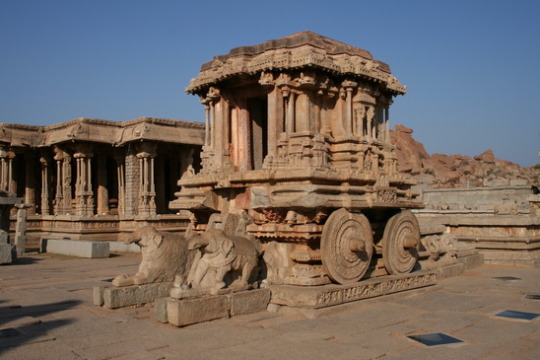
Yuezhi
“The Yuezhi were an ancient Indo-European people first described in Chinese histories as nomadic pastoralists living in an arid grassland area in the western part of the modern Chinese province of Gansu, during the 1st millennium BC. After a major defeat by the Xiongnu in 176 BC, the Yuezhi split into two groups migrating in different directions: The Greater Yuezhi...later settled in Bactria, where they then defeated the Greco-Bactrian Kingdom.
The subsequent Kushan Empire, at its peak in the 3rd century CE, stretched from...the Tarim Basin, in the north to...the Gangetic plain of India in the south. The Kushanas played an important role in the development of trade on the Silk Road and the introduction of Buddhism to China...some scholars have associated the Yuezhi with artifacts of extinct cultures in the Tarim Basin, such as the Tarim mummies and texts recording the Tocharian languages.
[N]omadic pastoralists known as the Yúzh��...supplied jade to the Chinese...The export of jade from the Tarim Basin, since at least the late 2nd millennium BC...the Qin dynasty (221–206 BC) bought jade and highly valued military horses from a people that Sima Qian called the Wūzhī...traded these goods for Chinese silk, which they then sold on to other neighbours. This is probably the first reference to the Yuezhi as a lynchpin in trade on the Silk Road, which in the 3rd century BC began to link Chinese states to Central Asia and, eventually, the Middle East, the Mediterranean and Europe...The Lesser or Little Yuezhi moved to the "southern mountains", believed to be the Qilian Mountains on the edge of the Tibetan Plateau, to live with the Qiang... Chinese sources continued to use the name Yuezhi and seldom used the Kushan as a generic term.”

“The central Asian people who called themselves Kushana, who were among the conquerors of the Greco-Bactrian Kingdom during the 2nd century BC, are widely believed to have originated as a dynastic clan or tribe of the Yuezhi. Because some inhabitants of Bactria became known as Tukhāra (Sanskrit) or Tókharoi (Τοχάριοι; Greek), these names later became associated with the Yuezhi. The Kushana were a Caucasoid people...They spoke Bactrian, an Eastern Iranian language.
The Kushanas integrated Buddhism into a pantheon of many deities and became great promoters of Mahayana Buddhism, and their interactions with Greek civilization helped the Gandharan culture and Greco-Buddhism flourish. During the 1st and 2nd centuries, the Kushan Empire expanded militarily to the north and occupied parts of the Tarim Basin, putting them at the center of the lucrative Central Asian commerce with the Roman Empire...Following this territorial expansion, the Kushanas introduced Buddhism to northern and northeastern Asia, by both direct missionary efforts and the translation of Buddhist scriptures into Chinese...and established translation bureaus, thereby being at the center of the Silk Road transmission of Buddhism.
"Tocharian"...became the common name for both the languages of the Tarim manuscripts and the people who produced them. Most historians now reject the identification of the Tocharians of the Tarim with the Tókharoi of Bactria, who are not known to have spoken any languages other than Bactrian. Other scholars suggest that the Kushanas may previously have spoken Tocharian before shifting to Bactrian on their arrival in Bactria.”
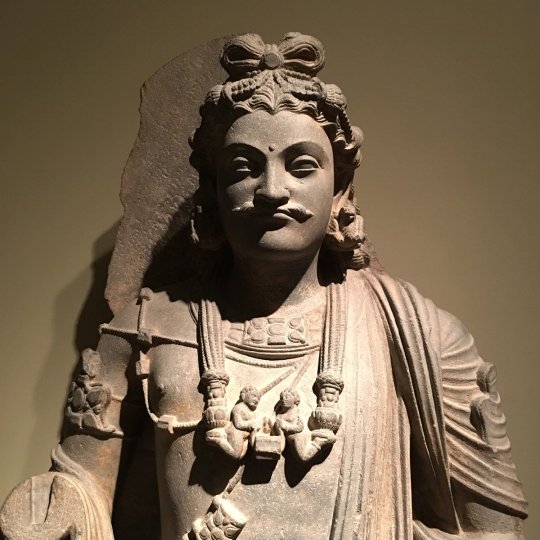
Kushan Empire
“The Kushan dynasty had diplomatic contacts with the Roman Empire, Sasanian Persia, the Aksumite Empire and Han Dynasty of China...the last of the Kushan and Kushano-Sasanian kingdoms were eventually overwhelmed by invaders from the north, known as the Kidarites.
The Kushans inherited the Greco-Buddhist traditions of the Indo-Greek Kingdom they replaced, and their patronage of Buddhist institutions allowed them to grow as a commercial power. Between the mid-1st century and the mid-3rd century, Buddhism, patronized by the Kushans, extended to China and other Asian countries through the Silk Road.
In 360 a Kidarite Hun named Kidara overthrew the Indo-Sasanians and remnants of the old Kushan dynasty, and established the Kidarite Kingdom. The Kushan style of Kidarite coins indicates they claimed Kushan heritage. The Kidarite seem to have been rather prosperous, although on a smaller scale than their Kushan predecessors. These remnants of the Kushan empire were ultimately wiped out in the 5th century by the invasions of the Hephthalites.”
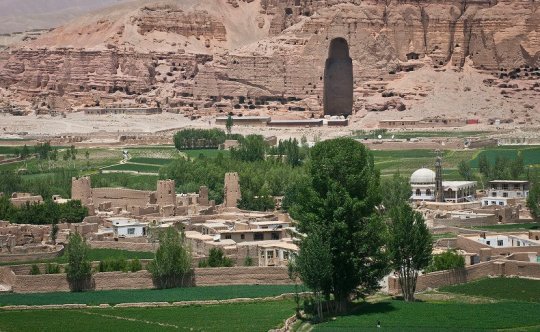
Kidarites
“The Kidarites were a dynasty that ruled Bactria and adjoining parts of Central Asia and South Asia in the 4th and 5th centuries CE. The Kidarites belonged to a complex of peoples known collectively in India as the Huna and/or in Europe as the Xionites...Named after Kidara, their founding ruler and purported membership of a clan named Ki, the Kidarites appear to have been a part of a Huna horde known in Latin sources as the Kermichiones (from the Iranian Karmir Xyon) or "Red Huna"...Indian records note that the Hūna had established themselves in modern Afghanistan and [north India]...The Kidarites are the last dynasty to regard themselves (on the legend of their coins) as the inheritors of the Kushan empire, which had disappeared as an independent entity two centuries earlier.”
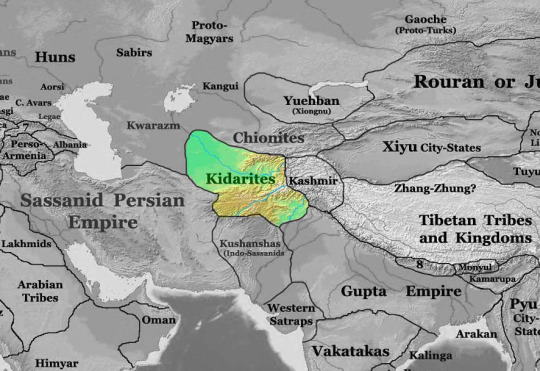
Ghilji
“The Ghilji also called Khaljī, Khiljī, Ghilzai, or Gharzai (ghar means "mountain" and zai "born of"), are the largest Pashtun tribal confederacy...The Ghilji at various times became rulers of present Afghanistan region and were the most dominant Pashtun confederacy from c. 1000 AD until 1747 AD.”

Gilgit
“Gilgit, known locally as Gileet, is the capital city of the Gilgit-Baltistan region, an administrative territory of Pakistan Occupied Kashmir, but claimed by India as its territory. The city is located in a broad valley near the confluence of the Gilgit River and Hunza River...It was an important stop on the ancient Silk Road, and today serves as a major junction along the Karakoram Highway with road connections to China, Skardu, Chitral, Peshawar, and Islamabad.”
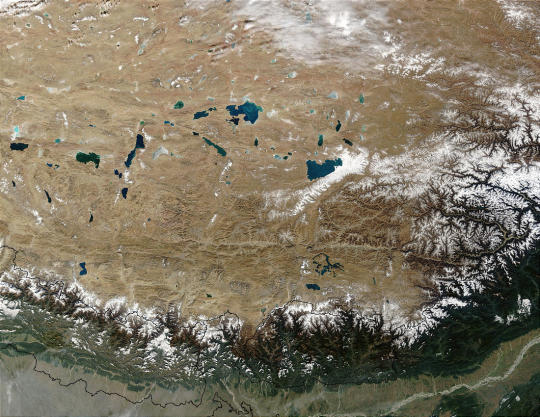
“The city's ancient name was Sargin, later to be known as Gilit, and it is still referred to as Gilit or Sargin-Gilit by local people. In Brushaski, it is named Geeltand in Wakhi and Khowar it is called Gilt.
Gilgit was an important city on the Silk Road, along which Buddhism was spread from South Asia to the rest of Asia. It is considered as a Buddhism corridor from which many Chinese monks came to Kashmir to learn and preach Buddhism. Two famous Chinese Buddhist pilgrims, Faxian and Xuanzang, traversed Gilgit according to their accounts. According to Chinese records, between the 600s and the 700s, the city was governed by a Buddhist dynasty referred to as Little Balur or Lesser Bolü.
In mid-600s, Gilgit came under Chinese suzerainty after the fall of Western Turkic Khaganate due to Tang military campaigns in the region. In late 600s CE, the rising Tibetan Empire wrestled control of the region from the Chinese. However, faced with growing influence of the Umayyad Caliphate and then the Abbasid Caliphate to the west, the Tibetans were forced to ally themselves with the Islamic caliphates.”

“Gilgit manuscripts...containing many Buddhist texts such as four sutras from the Buddhist canon, including the famous Lotus Sutra. The manuscripts were written on birch bark...They cover a wide range of themes such as iconometry, folk tales, philosophy, medicine and several related areas of life and general knowledge.
The Gilgit manuscripts are included in the UNESCO Memory of the World register. They are among the oldest manuscripts in the world, and the oldest manuscript collection surviving in Pakistan, having major significance in the areas of Buddhist studies and the evolution of Asian and Sanskrit literature. The manuscripts are believed to have been written in the 5th to 6th centuries AD.
The former rulers had the title of Ra, and there is a reason to suppose that they were at one time Hindus, but for the last five centuries and a half they have been Moslems. The names of the Hindu Ras have been lost, with the exception of the last of their number, Shri Ba'dut...Gilgit was ruled for centuries by the local Trakhàn Dynasty, which ended about 1810 with the death of Raja Abas, the last Trakhàn Raja.”

Gilan Province
Gilan Province...lies along the Caspian Sea, in Iran... It seems that the Gelae (Gilites) entered the region south of the Caspian coast and west of the Amardos River (later Safidrud) in the second or first century B.C.E....the native inhabitants of Gilan have originating roots in the Caucasus is supported by genetics and language, as Gilaks are genetically closer to ethnic peoples of the Caucasus (such as the Georgians) than they are towards other ethnic groups in Iran. Their languages shares typologic features with Caucasian languages. It was the place of origin of the Buyid dynasty.”

“Gilan is mostly inhabited by Gilaks, a Gilaki Iranian culture is present in the province that is not much different from other Iranian traditions. The biggest differences are seen in foods, traditional songs, traditional clothes, rural areas and their every-day life, and other traditions such as the Gilaki Calendar and the Gilaki New Year called "Nouruz Bel" which is during the summer. This new year is distinct from the more popular Iranian New Year as it relates to the people of Gilan and their mostly agricultural life.”
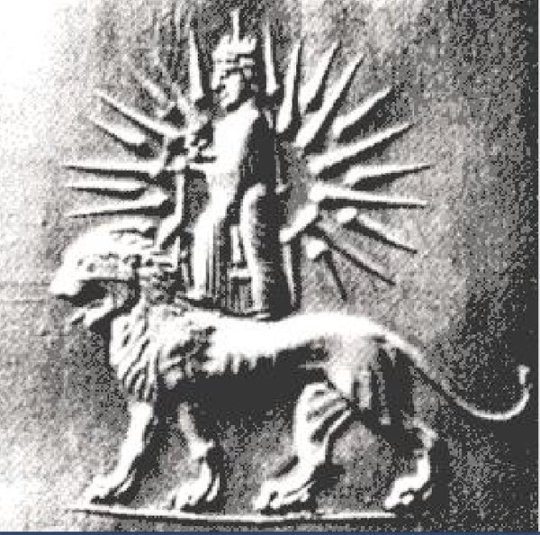
Epic of Gilgamesh
“The Epic of Gilgamesh is an epic poem from ancient Mesopotamia that is often regarded as the earliest surviving great work of literature. The literary history of Gilgamesh begins with five Sumerian poems about Bilgamesh (Sumerian for "Gilgamesh"), king of Uruk, dating from the Third Dynasty of Ur(c. 2100 BC)."
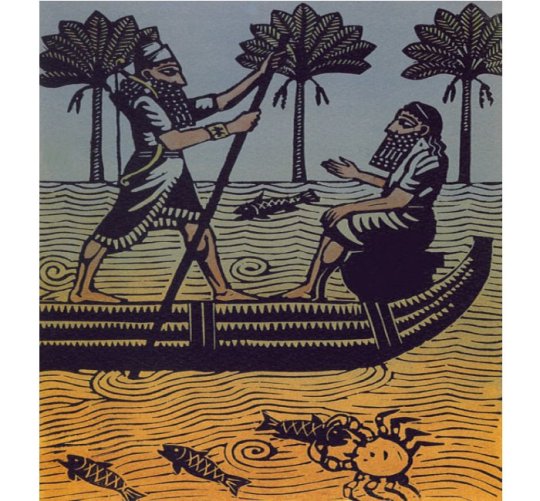
“The first half of the story discusses Gilgamesh, king of Uruk, and Enkidu, a wild man created by the gods to stop Gilgamesh from oppressing the people of Uruk. After Enkidu becomes civilized through sexual initiation with a prostitute, he travels to Uruk, where he challenges Gilgamesh to a test of strength. Gilgamesh wins the contest; nonetheless, the two become friends. Together, they make a six-day journey to the legendary Cedar Forest, where they plan to slay the Guardian, Humbaba the Terrible, and cut down the sacred Cedar. The goddess Ishtar sends the Bull of Heaven to punish Gilgamesh for spurning her advances. Gilgamesh and Enkidu kill the Bull of Heaven after which the gods decide to sentence Enkidu to death and kill him.
In the second half of the epic, distress over Enkidu's death causes Gilgamesh to undertake a long and perilous journey to discover the secret of eternal life. He eventually learns that "Life, which you look for, you will never find. For when the gods created man, they let death be his share, and life withheld in their own hands". However, because of his great building projects...Gilgamesh's fame survived well after his death with expanding interest in the Gilgamesh story which has been translated into many languages and is featured in works of popular fiction.”

The Origins Of Pearl Diving In The Persian Gulf
“Life in the Persian Gulf revolved around the natural pearl for centuries, according to archaeological evidence dating back to the Late Stone Age in 6000–5000 BC.
The Epic of Gilgamesh, a poem from 700 BC Mesopotamia that is among the first recorded examples of literary fiction, describes how the hero dived to the depths with weights tied to his feet for the “flower of immortality”, a well-known early allusion to pearling. By 100 AD, Pliny the Younger had declared that pearls were the most prized goods in Roman society, with those from the Gulf reigning as the most esteemed.
Pearl grounds originally stretched on the Arabian side from Kuwait along the coast of Saudi Arabia to Bahrain, Qatar, the United Arab Emirates and the Sultanate of Oman. They also ran along nearly the whole coast of the Persian side of the gulf, from near Bandar-e Bushehr (Kharg island) to Bandar-e Lengeh (Kish island) in the south and even further south into the Strait of Hormuz. The Phoenicians, who likely held the first monopoly on the pearl trade.”

Kish Island
“Kish Island has been mentioned in history variously as Kamtina, Arakia (Ancient Greek: Αρακία), Arakata, and Ghiss.Kish Island's strategic geographic location served as a way-station and link for the ancient Assyrian and Elamite civilizations when their primitive sailboats navigated from Susa through the Karun River into the Persian Gulf along the southern coastline, passing Kish, Qeshm, and Hormoz islands.
In 325 BC, Alexander the Great commissioned Nearchus to set off on an expeditionary voyage to the Sea of Oman and the Persian Gulf. Nearchus's writings on Arakata contain the first-known mention of Kish Island in antiquity. When Marco Polo visited the Imperial court in China, he commented on the Emperor's wife's pearls; he was told that they were from Kish.”

Silk Road transmission of Buddhism
“From the 4th century onward, Chinese pilgrims also started to travel on the Silk Road to India, the origin of Buddhism, by themselves in order to get improved access to the original scriptures...from the 4th century CE that Chinese Buddhist monks started to travel to India to discover Buddhism first-hand. Faxian's pilgrimage to India (395–414)...Xuanzang (629–644) and Hyecho traveled from Korea to India.”

“Buddhism in Central Asia began to decline in the 7th century in the course of the Muslim conquest of Transoxiana. A turning point was the Battle of Talas of 751. This development also resulted in the extinction of the local Tocharian Buddhist culture in the Tarim Basin during the 8th century. The Silk Road transmission between Eastern and Indian Buddhism thus came to an end in the 8th century...From the 9th century onward, therefore, the various schools of Buddhism which survived began to evolve independently of one another....In the eastern Tarim Basin, Central Asian Buddhism survived into the later medieval period as the religion of the Uyghur Kara-Khoja Kingdom...and Buddhism became one of the religions in the Mongol Empire...Central Asian Buddhism survived mostly in Tibet and in Mongolia.”
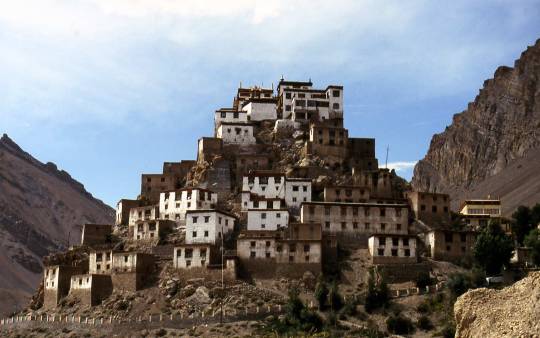
Key Monastery
“Kye Gompa (also spelled Ki, Key or Kee - pronounced like English key) is a Tibetan Buddhist monastery located on top of a hill...in the Spiti Valley of...India... Kye Gompa is said to have been founded by Dromtön (Brom-ston, 1008-1064 CE), a pupil of the famous teacher, Atisha, in the 11th century.”
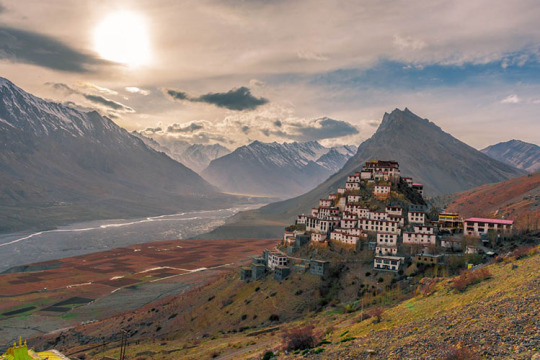
Spiti Valley
“Spiti Valley is a cold desert mountain valley located high in the Himalayas...The name "Spiti" means "The Middle Land", i.e. the land between Tibet and India...Spiti valley is a research and cultural centre for Buddhists. Highlights include Key Monastery and Tabo Monastery, one of the oldest monasteries in the world and a favourite of the Dalai Lama...Spiti valley is accessible throughout year via Kinnaur...Due to high elevation one is likely to feel altitude sickness in Spiti.”

Epic of King Gesar
“The Epic of King Gesar, ("King Gesar" Mongolian: Гэсэр Хаан, Geser Khagan) also spelled Geser (especially in Mongolian contexts) or Kesar is an epic cycle, believed to date from the 12th century, that relates the heroic deeds of the culture hero Gesar...Its classic version is to be found in central Tibet.”
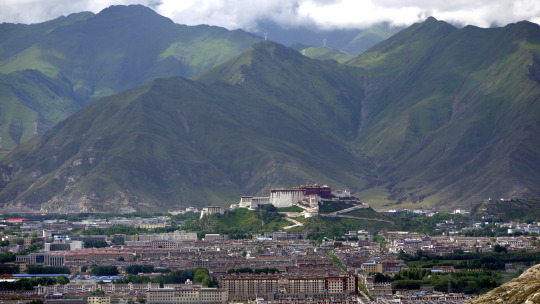
“Some 100 bards of this epic are still active today in the Gesar belt of China: Tibetan, Mongolian, Buryat, Balti, Ladakhi and Monguor singers maintain the oral tradition and the epic has attracted intense scholarly curiosity as one of the few oral epic traditions to survive as a performing art...versions of the epic are also recorded among the Balti of Baltistan, the Burusho people of Hunzaand Gilgit, and the Kalmyk and Ladakhi peoples, in Sikkim, Bhutan, Nepal, and among various Tibeto-Burmese, Turkish, and Tunghus tribes.”

”It has been proposed on the basis of phonetic similarities that the name Gesar reflects the Roman title Caesar, and that the intermediary for the transmission of this imperial title from Rome to Tibet may have been a Turkic language, since kaiser (emperor) entered Turkish through contact with the Byzantine Empire, where Caesar (Καῖσαρ) was an imperial title. Some think the medium for this transmission may have been via Mongolian Kesar. The Mongols were allied with the Byzantines, whose emperor still used the title. Numismatic evidence and some accounts speak of a Bactrian ruler Phrom-kesar, specifically the Kabul Shahi of Gandhara, which was ruled by a Turkish From Kesar ("Caesar of Rome")... the Tibetan name Gesar derived from Sanskrit...the Ladakh variant of Kesar, Kyesar, in Classical Tibetan Skye-gsar meant 'reborn/newly born', and that Gesar/Kesar in Tibetan, as in Sanskrit signify the 'anther or pistil of a flower', corresponding to Sanskrit kēsara, whose root 'kēsa' (hair) is Indo-European.
King Ge-sar has a miraculous birth, a despised and neglected childhood, and then becomes ruler and wins his (first) wife 'Brug-mo through a series of marvellous feats. In subsequent episodes he defends his people against various external aggressors, human and superhuman. Instead of dying a normal death he departs into a hidden realm from which he may return at some time in the future to save his people from their enemies.”

#bhagvadgita#grecobuddhism#hinduism#silkroad#ariana#aria#arya#getes#geats#getae#syncretism#bactrian#yuezhi#keemonastary#kidarites#beowulf#gilgit#gilgamesh#kinggeser
11 notes
·
View notes
Text
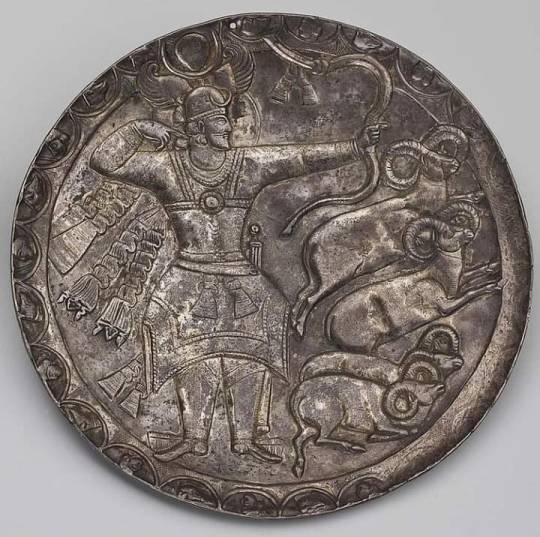
Piruz
1) Etymology
The Persian name Pīrūz with the meaning “victorious, triumphant” is derived from MP. Pērōz, which can be traced back to the Old Iranian composition *pari-auǰah – "having strength/power all around [= through and through]". It consists of *pari – “around, round; about” (~ Ved. pári, Av. pairi, OP. *pari, MP./NP. par) and the noun *auǰah – “strenght, vitality, power“ (~ Ved. ójas, Av. aoǰah,, MP. ōz)
The name is preserved in Iranian languages as:
Parthian. Paryōž
MP. Pērōz
NP. Pīrūz/Fīrūz
The name was borrowed into Non-Iranian languages such as:
Greek. Perózēs/Perṓzēs/Peirózēs
Classical Syriac. Pērōz
Old Armenian. Peroz
Old Georgian. ṗeroz
Chinese. Pílùsī
Arabic. Fayrūz
2) Figures
2.1) Peroz I was the Sasanian King of Kings of Iran from 459 to 484. A son of Yazdegerd II (r. 438–457), he disputed the rule of his elder brother and incumbent king Hormizd III (r. 457–459), eventually seizing the throne after a two-year struggle. His reign was marked by war and famine. Early in his reign, he successfully quelled a rebellion in Caucasian Albania in the west, and put an end to the Kidarites in the east, briefly expanding Sasanian rule into Tokharistan, where he issued gold coins with his likeness at Balkh. Simultaneously, Iran was suffering from a seven-year famine. He soon clashed with the former subjects of the Kidarites, the Hephthalites, who possibly had previously helped him to gain his throne. He was defeated and captured twice by the Hephthalites and lost his recently acquired possessions.
In 482, revolts broke out in the western provinces of Armenia and Iberia, led by Vahan Mamikonian and Vakhtang I respectively. Before Peroz could quell the unrest there, he was defeated and killed in his third war with the Hephthalites in 484, who seized the main Sasanian cities of the eastern region of Khorasan−Nishapur, Herat and Marw. Taking advantage of the weakened Sasanian authority in the east, the Nezak Huns subsequently seized the region of Zabulistan. Peroz was the last shahanshah to mint unique gold coins in the Indian region of Sindh, which indicates that the region was lost around the same period. Albeit a devout Zoroastrian, Peroz supported the newly established Christian sect of Nestorianism, and just before his death, it was declared the official doctrine of the Iranian church.
Peroz's wars against the Hephthalites have been described as "foolhardy" in both contemporary and modern historiography. His defeat and death introduced a period of political, social and religious tumult. (More information at: https://en.wikipedia.org/wiki/Peroz_I)
2.2) Peroz II also known as Gushnasp-Bandeh was king of Persia. He was son of Mah-Adhur Gushnasp and Kahar-dukht, who was daughter of Yazdandad son of Khosrau I. Peroz II reigned only for a short time until he was killed by Sasanian nobles. (from: https://en.wikipedia.org/wiki/Peroz_II)
2.3) Peroz III was son of Yazdegerd III, the last Sasanian King of Kings of Iran. After the death of his father, who legend says was killed by a miller at the instigation of the governor of Marw, he retreated to territory under the control of Tang China. He served as a Tang general and the head of the Governorate of Iran, an exiled extension of the Sassanid court. Most of what is known of Peroz III is written in the Old Book of Tang and the New Book of Tang. (More information at: https://en.wikipedia.org/wiki/Peroz_III)
Image: Plate with a hunting scene involving king Piruz I (from: https://ramiyarkaranjia.com/2021/03/)
3 notes
·
View notes
Photo

#Türklerin tarih boyunca kurmuş olduğu ; 16 İmparatorluk 38 Devlet 37 Hanlık 33 Beylik 10 Cumhuriyet 4 Atabeylik vardır... Bunların toplamı 138'dir, tarihte bir başka örneği yoktur... (Tarihsel periyodik bir sıralama olmasa da mümkün olduğunca geçmişten günümüze olacak şekilde yazmaya çalıştım) Kuruluş ve yıkılış tarihleri ile birlikte: ~ Büyük Hun imp.~ m.ö 220-45 ~ Doğu Hun imparatorluğu~ 48-156 ~ Batı Hun imparatorluğu~ 48-216 ~ Avrupa Hun imp.~ 375-454 ~ Eftalitler İmp (Ak Hun)~440-710 ~ Touba Türk Hanedanlığı~386-534 ~ Kuzey Vey Hanedanlığı~ 386-535 ~ Kidarite Krallığı ~ 320s - 500 ~ Avar Kağanlığı ~ 600-823 ~ Sabirler ~ 461-465 ~ Toharistan Yabguluğu~658-759 1- Birinci Göktürk Kağanlığı~552-603 2- İkinci Göktürk Kağanlığı~681-744 3- Karluk Yabgu Devleti ~665-681 4- Türk Şahiler Devleti~665-850 5- Seyento Hanlığı~630-647 6- Türgeş Kağanlığı~699-766 7- Kimek-Kıpçak Birliği~880-1200 8- Uygur Kağanlığı~742-840 9- Oğuz Yabgu Devleti~ 750-1055 10- Kangar Birliği ~840-990 11- Karahanlılar Devleti~ 840-1212 12- Yenisey Kırgız Kağanlığı~840-1207 13- Karahoca Uygur Krallığı~991-1209 14- Peçenek Hanlığı~ 860-1091 15- Kansu Uygur Krallığı~848-1036 16- Kuman Kıpçak Hanlığı~1011-1240 17- Ahmadili Hanedanlığı~1112-1220 18- İldenizli Atabeyliği~1136-1225 19- Salgurlar Hanedanlığı~1148-1286 20- Osmanlı İmparatorluğu~1302-1923 21- Karakoyunlu Devleti~1380-1469 22- Hazar Kağanlığı~651-1048 23- Büyük Bulgar Hanlığı~632-665 24- İlk Bulgar İmparatorluğu~681-864 25- Volga Bulgar Devleti~626 -1236 26- Tulunoğulları~ 868 - 935 27- İhşidiler Devleti ~935-969 28- Böriler Şam Atabeyliği~1104-1154 29- Zengi Devleti~1127-1250 30- Memlük Türk Devleti~1256 - 1517 31- Karamanoğulları Beyliği~1711-1835 32- Delhi Sultanlığı~1206-1526 33- Bengal Sultanlığı~1352-1576 34- Gazneliler Devleti~ 977-1186 35- Adilşahlar Devleti~1490-1686 36- Kutbşahlar Devleti~1518–1687 37- Babürlüler İmparatorlğu~1526-1858 38- Haydarabad Devleti ~ 1724-1948 39- Selçuklu İmparatorluğu ~1037-1157 40- Kerman Selçuk Sultanlğı~1041-185 41-Anadolu Selçuklu Devleti~1071-1308 42- Harzemşahlar Devleti ~1077-1231 43- Akkoyunlular Devleti ~ 1378-1508 44- Çağatay Hanlığı ~1227-1347 45- Altın Ordu Devleti ~1242-1502 46- Ti (Tekeli Oto) https://www.instagram.com/p/CSQy48zokL2/?utm_medium=tumblr
2 notes
·
View notes
Text
Discovering the world
Afghanistan 🇦🇫
Basic facts
Official name: د افغانستان اسلامي امارت (Də Afġānistān Islāmī Imārat)/امارت اسلامی افغانستان (Imārat-i Islāmī-yi Afghānistān) (Pashto/Persian) (Islamic Emirate of Afghanistan)
Capital city: Kabul
Population: 41.1 million (2023)
Demonym: Afghan
Type of government: unitary theocratic Islamic emirate
Head of state: Hibatullah Akhundzada (Supreme Leader)
Head of government: Abdul Kabir (Prime Minister)
Gross domestic product (purchasing power parity): $67.13 billion (2021)
Gini coefficient of wealth inequality: 65.5% (high) (2019)
Human Development Index: 0.478 (low) (2021)
Currency: afghani (AFN)
Fun fact: Women in Afghanistan earned the right to vote in 1919, one year before their counterparts in the United States.
Etymology
Some scholars suggest that Afghān is derived from the Sanskrit word Aśvakan, which literally means “horsemen” and was the name used for ancient inhabitants of the Hindu Kush mountain range.
“-stan” is a Persian suffix meaning “place of”, so “Afghanistan” translates to “land of the Afghans” or “land of the Pashtuns”.
Geography
Afghanistan is located between Central and South Asia and borders Uzbekistan to the north, China and Tajikistan to the northeast, Pakistan to the east and south, Iran to the southwest, and Turkmenistan to the northwest.

There are several climates: Mediterranean-influenced hot-summer humid continental and tundra in the northeast and center, hot-summer Mediterranean in the west, hot desert in the south, and cold steppe in the rest of the country. Temperatures range from −4 °C (24.8 °F) to 42 °C (107.6 °F). The average annual temperature is 12.6 °C (54.6 °F).

The country is divided into 34 provinces (wilāyatuna), which are further divided into 421 districts (wuləswāləi/wuləswālī). The largest cities in Afghanistan are Kabul, Kandahar, Herat, and Mazar-i-Sharif.

History
3300-2350 BCE: Helmand culture
678-550 BCE: Median kingdom
550-330 BCE: Achaemenid Empire
330-305 BCE: Seleucid Empire
305-185 BCE: Maurya Empire
185-145 BCE: Indo-Greek Kingdom
145-124 BCE: Indo-Scythian Kingdom
124 BCE-19 CE: Parthian Empire
19-226: Indo-Parthian Kingdom
30-375: Kushan Empire
224-365: Sasanian Empire
320-450: Kidarites
450-665: Hephthalites
665-822: Turk Shahis
822-870: Hindu Shahis
870-977: Saffarid dynasty
977-1186: Ghaznavid Empire
1186-1215: Ghurid dynasty
1215-1219: Anushtegin dynasty
1219-1370: Mongol Empire
1290-1320: Khalji dynasty
1370-1507: Timurid Empire
1501-1736: Safavid Empire
1501-1785: Khanate of Bukhara
1520-1554: Arghun dynasty
1526-1857: Mughal Empire
1709-1738: Hotak dynasty
1738-1747: Afsharid dynasty
1747-1823: Durrani Empire
1747-1892: Maimana Khanate
1793-1863: Emirate of Herat
1818-1855: Emirate of Kandahar
1823-1855: Emirate of Kabul
1838-1842: First Anglo-Afghan War
1839-1842: Durrani Kingdom
1842-1926: Emirate of Afghanistan
1863-1869: First Afghan Civil War
1878-1880: Second Anglo-Afghan War
1879-1919: British protectorate of Afghanistan
1919: Third Anglo-Afghan War
1926-1973: Kingdom of Afghanistan
1928-1929: Second Afghan Civil War
1944-1947: Khost disturbances
1973-1978: Republic of Afghanistan
1978-1987: Democratic Republic of Afghanistan
1979-1989: Soviet-Afghan War
1987-1992: Republic of Afghanistan
1989-1992: Third Afghan Civil War
1992-1996: Islamic State of Afghanistan; Fourth Afghan Civil War
1996-2001: Islamic Emirate of Afghanistan; Fifth Afghan Civil War
2001-2004: Afghan Interim and Transitional Administration
2004-2021: Islamic Republic of Afghanistan
2021-present: Islamic Emirate of Afghanistan
Economy
Afghanistan mainly imports from Iran, China, and Pakistan and exports to India, Pakistan, and China. Its top exports are grapes, nuts, and carpets.
Its service sector contributes the most to the GDP (56%), followed by agriculture (23%) and industry (21%). Nevertheless, agricultural production is the backbone of Afghanistan’s economy, employing about 40% of the workforce.

Afghanistan is a member of the Economic Cooperation Organization, the Organization of Islamic Cooperation, and the South Asian Association for Regional Cooperation.
Demographics
Afghanistan recognizes fourteen ethnic groups, of which the largest ones are the Pashtun (52%), Tajik (27%), Hazara (9%), and Uzbek (8%). The official religion is Islam, practiced by 99% of the population, 90% of which is Sunni.
Afghanistan has a negative net migration and a fertility rate of 4.6 children per woman. Only 26% of the population lives in cities. Life expectancy is 66 years and the median age is 18.4 years. The literacy rate is 43%.
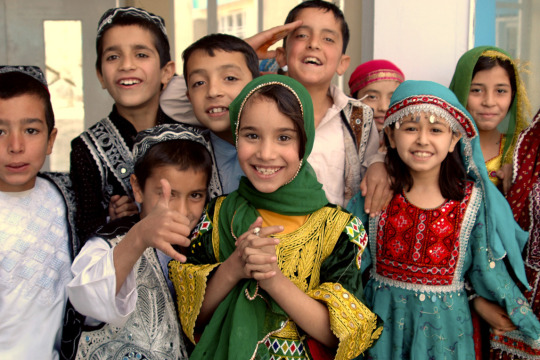
Languages
The official languages of the country are Dari, often referred to as Farsi and spoken by 78% of the population, and Pashto, spoken by 50% of the population.

Other commonly-spoken languages are Uzbek (10%), English (5%), Turkmen (2%), and Urdu (2%).
Culture
Family is the pillar of life in Afghanistan, and family’s interests supersede personal desires and obligations to one’s ethnic group. Pashtuns follow the Pashtunwali (the Pashtun lifestyle), whose key tenets are hospitality, the provision of sanctuary to those seeking refuge, and revenge for the shedding of blood.
Men wear a long tunic (kameez), pants (shalwar), and a peaked fur hat (karakul) or a flat, round-topped woolen hat (pakol). Women wear a long robe and a long veil (chador).

Architecture
Afghanistan’s architecture reflects the country’s location at the crossroads of Central Asia, the Indian subcontinent, and the Iranian plateau, as well as Buddhist, Greek, Islamic, and Zoroastrian influences.
It is characterized by stone foundations, brick and timber frames, wooden beams, mud and bamboo roofs, and mud and straw walls.

Cuisine
The Afghan diet is based on dairy products, meat, rice, and vegetables. Typical dishes include aushak (pasta dumplings filled with chives with tomato sauce and yogurt), chapli kabab (a minced kebab with spices in the shape of a patty), qabeli palaw (steamed rice with almonds, carrots, and raisins, and marinated lamb meat), qormah (an onion- and tomato-based stew served with rice), and qoroot (small balls of dehydrated yogurt with salt).

Holidays and festivals
Afghanistan’s year starts with Nowruz, the Persian New Year. It is celebrated with music, dance, and buzkashi tournaments, during which horse-mounted players attempt to place a goat carcass into a goal.

Yalda commemorates the ancient goddess Mithra and marks the longest night of the year on the eve of the winter solstice. Families gather together to recite poetry and eat fruits.

Other religious festivals include Ashura, which mourns the death of prophet Muhammad’s grandson of prophet Muhammad, Husayn ibn Ali; Ramadan, a period of fasting, prayer, and reflection, and Eid al-Fitr, which marks the end of Ramadan.

Landmarks
There are two UNESCO World Heritage Sites: Cultural Remains of the Bamyan Valley and Minaret and Archaeological Remains of Jam.

Other landmarks include Bagh-e Babur, gardens with terraced buildings, a mosque, and the tomb of the first Mughal emperor; the town of Balkh; Band-e Amir National Park, the Citadel of Alexander, and the Great Mosque of Herat.

Great Mosque of Herat
Famous people
Ahmad Khan Mahmidzada - actor
Azita Ghanizada - actress
Fatima Bhutto - writer
Jem Cohen - filmmaker
Naghma - singer
Najibullah Zadran - cricketer
Qahar Asi - poet
Siddiq Barmak - movie director and producer
Vida Samadzai - actress and model
Zarifa Ghafari - youngest mayor
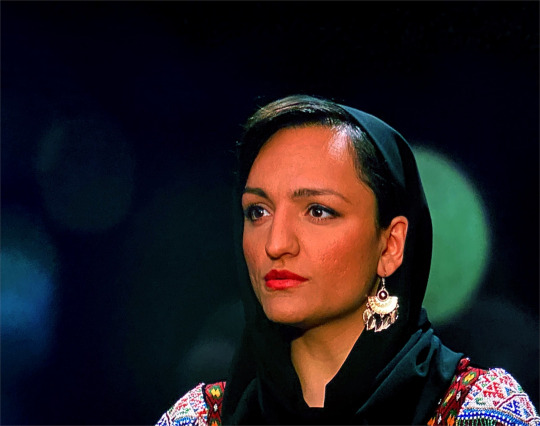
Zarifa Ghafari
You can read about life in Afghanistan before the 2021 Taliban takeover here and watch a documentary about life under the Taliban here.
4 notes
·
View notes
Photo

INDIA, KIDARITES of TAXILA, Salanavira Kushana style Gold dinar. SCARCE!
0 notes
Text
The Kushana Empire
The word Kushan derived from the Chinese term Guishuang, which refers to one of the branches of Yuezhi. The Kushan Empire was a Syncretic Empire; this empire was formed during the 1st century CE; in the Bactrian territories. The Kushan dynasty was associated with Indo-European people who lived in northwestern China until they drove to the west by another group, the Xiongnu, in 176–160 B.C. The Kushan Empire was one of the five branches of the Yuezhi confederation. They are also known as Guishuang in Chinese sources. The origin of the Kushan Dynasty was connected to China and also; in Central Asia. They were the nomadic people and are also known as Tocharians; they use to speak Indo-European Languages. For the administrative purpose, they use to make use of the Greek language, but; during the latter part, they use to make use of Bactrian Language.
The Kushan Empire had diplomatic contact with the Roman Empire, Sasanian Persia, the Aksumite Empire, and the Han dynasty in China. They were the center of the trade relationship between the Roman Empire and China. The Kushan Empire became affluent through trade, particularly with Rome, as they had issued a large number of gold coins. During their rule, the political, economic, religious, and cultural contacts between South Asia and Central Asia had boosted greatly. The founder of the Kushan Empire was Kujula Kadphises, first Yuezhi chief. He established this empire; by getting supremacy over the three kingdoms, namely Kabul, Kandahar, and Afghanistan. He was the first Kushan prince who united the Yuezhi confederation during the 1st century CE. King Kujula Kadphises issued the title ‘Great King’ or ‘King of the King’ on all the coins patterned on those of Saka and Parthian rulers.
When the power of Indo-Greek in the north-west borderlands decline, the Yuezhi migration caused some groups of Saka’s got migrated to the Indian Subcontinent. In the middle of the 1st Century CE, the power of the Kushan Empire extended from Bactria across the Hindu Kush to Gandhara and Taxila (in modern Pakistan). By the middle of the first century CE, Kushan power extended from Bactria across The Kushan Empire ruled for about 120 years from 150 CE -270 CE. During the 3rd Century, this dynasty had fragmented into semi-independent kingdoms. When the Sasanians invaded India, they fell into the hands of the Sasanians Empire and; formed the Kushano-Sasanian Kingdom in the areas of Sogdiana, Bactria, and Gandhara.
In India, the Kushan Empire had used its dynamic name as ‘Koshano’ on their coinage. Kaniska, the third ruler of the Kushan Empire, had ruled this kingdom from the late 1st century CE to the early mid-second century CE. It used to administrate from two capitals Purushapura (now Peshawar) near the Khyber pass; and Mathura in northern India. The introduction of gold coin in the Kushan Empire; was made by King Vima Kadphises. He issued his gold coins by melting down all the Roman coins imported to India in exchange for luxury items. Some of the numismatic stay that king Kujula Kadphises continued issuing coins that were an imitation of the posthumous type last Indo-Greek ruler in Central Afghanistan. The copper coins issue by him bears the royal portrait on the obverse side imitates the obverse side of the gold coins of the Roman Emperor Augustus.
The Kushan Empire adopted an element of the Hellenistic culture of Bactria. The Hellenistic also referred to as Hellenization; or Hellenism, refers to the spread of Greek culture that began after the conquest of Alexander the Great in the fourth century, B.C.E. Generally, the Kushan Empire made the use of the corrupt Greek alphabet to suit their language. They issued a coin with added development of letter Þ “sh,” as in “Kushan. In the first few years of King Kanishka, they made use of Greek legend along with Pali legend (in Kharoshthi Script). The Kushan legend was inscribed in Greek script and Kharoshthi script.
The rule of the Kushan Empire was marked for three centuries; until the invasion of Kidarites. They were the feudatories of Western Satraps, the Satavahanas, and the first Gupta Empire rulers.
The rulers of the Kushan Empire are
Kujula Kadphises (30 CE-80 CE)
Vima Taktu or Sadashkana (80CE-95 CE)
Vima Kadphises (95CE-127 CE)
Kanishka I (127 CE-150 CE)
Huvishka (150 CE-180 CE)
Vasudeva I (190 CE-230 CE)
Vasishka (247 CE-267 CE)
Little Kushans (270 CE-350 CE)
Kujula Kadphises
Kujula Kadphises was the founder and the first ruler of the Kushan Empire. He is also identified with the Yabgu of Guishuang named Qiu Jiuque in Hou Han Shu. He ruled the part of Parthia, Kabul, Kandahar, and a part of Afghanistan, and occupied the Hindu Kush. During his reign Kujula Kadphises issued an extensive series of coins; the coins issued by him are based on Greek, Scythian, and Parthian designs; it was already in current in the territory of present-day Afghanistan and Pakistan.
Kujula Kadphises crossed the Hindu Kush and formed an alliance with the last Greek King Hermaeus in the Kabul Valley in the year 48 CE. Later, it helped Kujula Kadphises son Vima Kadphises to attack and defeat the Scythians in northern India. He also established an empire that he and his successor continued to enlarge until it extended from the Ganges River in the east to the Gobi Desert in the north.
This copper Drachm was issued by king Kujula Kadphises during his reign in the Kushan Empire. This coin is ’posthumous Hermaios’ type.
Weight – 8.70g
Obverse – Diademed bust of the king facing towards the right.
Reverse- Nike with an outstretched hand traces of Kharoshthi legend and a monogram in right field.
Vima Taktu or Sadashkana
Vima Taktu sat on the throne after Kujula Kadphises, The inscription found in the Rabatak had mentioned about Sadashkana; which points towards Vima Taktu.
This copper Drachm was issued by Vima Taktu.
Weight – 8.28g
Obverse – Bust of the Kushan ruler facing towards right wielding a spear in front of his face
Reverse- King mounted on a horse to right with Kharoshti legend around
Vima Kadphises
Vima Kadphises ruled this empire from 90 CE to 100 CE, after sitting on the throne of the Kushan Empire he conquers Afghanistan and north-west India. He attacks and defeated the Scythians (Known as Saka) and extended this empire. Later his successor extended this empire from the Ganges River in the east to the Gobi Desert in the North Vima Kadphises was the first emperor to issue gold coinage in India in addition to the existing copper and silver coinage.
He introduces the gold coins by melting down Roman coin that was imported to India in exchange for a variety of luxury items. Coins issued by Vima Kadphises are very distinctive because it portrayed all his glory as a large man with a huge nose and a wart on one cheek.
This gold dinar was issued by king Vima Kadphises during his reign in the Kushan Empire.
This gold dinar was issued by Vima Kadphises during his reign in the Kushan Empire.
Weight – 7.86g
Obverse- Bust of the king facing left, wearing diadem and domed crown, emerging from the clouds, holding mace-scepter in the left hand, flames emerging from the left shoulder, tamgha in right field with legend BACILEYC OOH MO KADFICHC around.
Reverse- Ithyphallic Shiva standing facing head left, holding a composite trident with an axe in the right hand, he-goat skin draped over left arm, tamgha to left, Buddhist Triratna (“Three Jewels”) to right with Kharoshthi legend Maharajasa rajadirajasa Sarvaloga Isvarasa Mahisvarasa Hima Kaphthisasa Tradarasa around.
Kanishka I
Kaniska I was the fifth ruler of the Kushan Empire; he ruled this empire for almost 28 years. He was one of the great kings of the Kushan Empire. During that time it was also acknowledged as one of the four great Eurasian powers.
During the rule of Kanishka I the Kushan Empire had reached its highest peak. He was very famous for his military, political, and spiritual achievements. After coming to the power Kanishka I extended his empire to the Pataliputra on the Gangetic plain. One of the main capitals of this kingdom was located in Purusapura in Gandhara and the other major capital was located at Kapisa.
The coins issued by Kanishka I depict Zoroastrian, Greek, and Brahmanic deities as well as the Buddha.
This gold Dinar issued by king Kanishka I during his reign in Kushan Empire
Weight- 7.8g
Obverse- Diademed and crowned king standing facing, head left, holding a spear in his left hand and with right hand sacrificing at an altar, the flame at shoulder, with legend ÞAONANOÞAO KA NhÞKI KOÞANO around.
Reverse- Goddess Ardoksho is radiating and nimbate standing towards the right, extending cornucopia with both hands, tamgha to right.
Huvishka
Huvishka was the son of Kanishka, his reign is also marked as the golden age of the Kushan Empire. He is also known as the founder of the town ‘Hushkpur’ that he founded in Kashmir in his name. Today; this town is known as Uskpur.
The reign of Huvishka was marked as a peaceful, consolidating Kushan power in the parts of northern India. Huvishka was the follower of Lord Shiva; therefore, some of the coins issued by him depict Kartikeya (son of Shiva and Parvati).
Most of the coin issued by Huvishka was in gold and copper. The obverse side of the coins issued by Huvishka is of two types one with a rounded helmet with crescent ornament, the second with conical, jeweled crown, each shown in a variety of postures.
Coins issued by Huvishka is very vast and varied, he issued a coin in gold and bronze. In gold, he issued denomination like Dinar and Quarter Dinar. The obverse side of the gold dinar depicts the bust of the king and the reverse side of this king depicts different deities like Ardochsho, Athsho, Mao, Mithra, Nana, Osho, Pharro, and Shahrevar.
Vasudeva I
Vasudeva I was the last great emperor of Kushan Emperor. King Vasudeva, I ruled the northern part of Indian and issued coins from Balkh (Bactria) region. King Vasudeva I during his reign deal with the rise Sasanians Empire and it was during this period first incursion of Kushano-Sasanian in the northwest of his territory came into being.
Vasudeva I issued coins in gold and copper. In gold, he issued denominations like Dinar and Quarter Dinar. Coins issued by Vasudeva I is a restoration of the Kanishka’s coinage. King Vasudeva might have been the follower of Lord Shiva as the reverse side of his coin depicts Lord Shiva. The obverse side of his coin depicts ‘King standing facing towards left sacrificing at the fire alter’ and holding nimbate in this right hand. In some gold and copper coin issued by him depicts Lord Shiva with his bull Nandi on the reverse side of this coin.
This gold Dinar was issued by Vasudeva I during his reign in the Kushan Empire.
Weight- 7.9g
Obverse- King nimbate standing left, holding a trident to right, making an offering at an altar to left, above which is a garlanded trident with Kharoshti legend Paonanopao Bazoho Kopano.
Reverse- Shiva standing facing before Nandi bull, holding a trident in right and noose in left, tamgha in upper left field with label Ohpo
Vasishka
Vasishka was the elder son of Huvishka, he ruled the Kushan Empire from 247 CE to 265CE. Coins issued by Vasishka were slightly smaller than his predecessors, during his reign quality the coins, debased. The deities that appear on the reverse of his coins were similar to Huvishka and Vasudeva I. The reign of Vasishka marks the end of the Kushana Empire!
Share
The post The Kushana Empire appeared first on Blog | Mintage World.
0 notes
Text
Kidarite Huns originated from Little Yuezhi (Chie people) and were a core tribe of the western Huns : the so called Kutrigurs Huns (also Kutrigur Bulgars), the tribe of Attila the Hun http://dlvr.it/QZ7Ys5
0 notes
Text
Bozkır Kavimleri
Bozkır Kavimleri
Egemen Çağrı Mızrak
Ötüken Neşriyat
M.Ö. 7. yüzyıldan başlayarak M.S. 6. yüzyılın üçüncü çeyreğinde vuku bulan Gök-Türk fetihlerine kadar Doğu İran, Toharistan, Soğdiyana ve Kuzey Hindistan coğrafyaları Avrasya bozkırlarının muhtelif atlı-okçu savaşçı kavimleri tarafından hâkimiyet altına alınmıştı. Bunlar arasında en meşhur olanlarını kronolojik bakımdan “Sakalar, Yüeh-chih’ler ve Hunlar – Chionit, Kidarit, Eftalit/Ak Hun” şeklinde sıralayabiliriz. Bazı bilim adamları bu atlı-okçu bozkır kavimlerinin menşeinin Altaylı olduğunu iddia ederken, diğerleri (ki bilim adamlarının önemli bir kısmını oluşturmaktadır) onların Hint-Avrupalı oldukları görüşündedirler. Keyfî ve/veya siyasî bakış açılarıyla motive edilmiş antropolojik ve etimolojik çalışmalar nedeniyle bu kavimlerin kökenleri tartışmalı kalmaya devam etmektedir. At-yetiştiricisi bu göçebelerin kültürel karakteristikleri ve yaşam tarzları en otantik şekliyle günümüz Orta Asya ve Güney Sibirya’nın Türk boylarıyla örtüşmektedir. Egemen Çağrı Mızrak, Bozkır Kavimleri kitabında, soy şecereleri, sosyo-kültürel ve fizik antropolojik yapıları ile genetik işaretlerinin analizleri sonucunda, bahsi geçen bozkır göçebelerinin Altaylı ve özellikle de Türk kökenli olabileceklerine dair güçlü deliller ortaya koyuyor.
devamı burada => https://goo.gl/kJuCBo
0 notes
Text
Bozkır Kavimleri Kitabı pdf indir pdf indir
Bozkır Kavimleri
M.Ö. VII. yüzyıldan başlayarak M.S. VI. yüzyılın üçüncü çeyreğinde vuku bulan Gök-Türk fetihlerine kadar Doğu İran, Toharistan, Soğdiyana ve Kuzey Hindistan coğrafyaları Avrasya bozkırlarının muhtelif atlı-okçu savaşçı kavimleri tarafından hâkimiyet altına alınmıştı. Bunlar arasında en meşhur olanlarını kronolojik bakımdan “Sakalar, Yüeh-chih’ler ve Hunlar – Chionit, Kidarit, Eftalit/Ak Hun” şeklinde sıralayabiliriz. Bazı bilim adamları bu atlı-okçu bozkır kavimlerinin menşeinin Altaylı olduğunu iddia ederken, diğerleri (ki bilim adamlarının önemli bir kısmını oluşturmaktadır) onların Hint-Avrupalı oldukları görüşündedirler. Keyfî ve/veya siyasî bakış açılarıyla motive edilmiş antropolojik ve etimolojik çalışmalar nedeniyle bu kavimlerin kökenleri tartışmalı kalmaya devam etmektedir. At-yetiştiricisi bu göçebelerin kültürel karakteristikleri ve yaşam tarzları en otantik şekliyle günümüz Orta Asya ve Güney Sibirya’nın Türk boylarıyla örtüşmektedir. Egemen Çağrı Mızrak, Bozkır Kavimleri kitabında, soy şecereleri, sosyo-kültürel ve fizik antropolojik yapıları ile genetik işaretlerinin analizleri sonucunda, bahsi geçen bozkır göçebelerinin Altaylı ve özellikle de Türk kökenli olabileceklerine dair güçlü deliller ortaya koyuyor.
Bozkır Kavimleri Kitabı pdf indir pdf indir oku
#Bozkır Kavimleri kitabı pdf indir#Bozkır Kavimleri pdf oku#Bozkır Kavimleri ücretsiz indir#Bozkır Kavimleri ücretsiz pdf indir#Tarih
0 notes
Photo

Rare INDIA, KIDARITES of KASHMIR, Vinayaditya base Gold dinar. CHOICE!
0 notes
Text
The Kushana Empire
The word Kushan derived from the Chinese term Guishuang, which refers to one of the branches of Yuezhi. The Kushan Empire was a Syncretic Empire; this empire was formed during the 1st century CE; in the Bactrian territories. The Kushan dynasty was associated with Indo-European people who lived in northwestern China until they drove to the west by another group, the Xiongnu, in 176–160 B.C. The Kushan Empire was one of the five branches of the Yuezhi confederation. They are also known as Guishuang in Chinese sources. The origin of the Kushan Dynasty was connected to China and also; in Central Asia. They were the nomadic people and are also known as Tocharians; they use to speak Indo-European Languages. For the administrative purpose, they use to make use of the Greek language, but; during the latter part, they use to make use of Bactrian Language.
The Kushan Empire had diplomatic contact with the Roman Empire, Sasanian Persia, the Aksumite Empire, and the Han dynasty in China. They were the center of the trade relationship between the Roman Empire and China. The Kushan Empire became affluent through trade, particularly with Rome, as they had issued a large number of gold coins. During their rule, the political, economic, religious, and cultural contacts between South Asia and Central Asia had boosted greatly. The founder of the Kushan Empire was Kujula Kadphises, first Yuezhi chief. He established this empire; by getting supremacy over the three kingdoms, namely Kabul, Kandahar, and Afghanistan. He was the first Kushan prince who united the Yuezhi confederation during the 1st century CE. King Kujula Kadphises issued the title ‘Great King’ or ‘King of the King’ on all the coins patterned on those of Saka and Parthian rulers.
When the power of Indo-Greek in the north-west borderlands decline, the Yuezhi migration caused some groups of Saka’s got migrated to the Indian Subcontinent. In the middle of the 1st Century CE, the power of the Kushan Empire extended from Bactria across the Hindu Kush to Gandhara and Taxila (in modern Pakistan). By the middle of the first century CE, Kushan power extended from Bactria across The Kushan Empire ruled for about 120 years from 150 CE -270 CE. During the 3rd Century, this dynasty had fragmented into semi-independent kingdoms. When the Sasanians invaded India, they fell into the hands of the Sasanians Empire and; formed the Kushano-Sasanian Kingdom in the areas of Sogdiana, Bactria, and Gandhara.
In India, the Kushan Empire had used its dynamic name as ‘Koshano’ on their coinage. Kaniska, the third ruler of the Kushan Empire, had ruled this kingdom from the late 1st century CE to the early mid-second century CE. It used to administrate from two capitals Purushapura (now Peshawar) near the Khyber pass; and Mathura in northern India. The introduction of gold coin in the Kushan Empire; was made by King Vima Kadphises. He issued his gold coins by melting down all the Roman coins imported to India in exchange for luxury items. Some of the numismatic stay that king Kujula Kadphises continued issuing coins that were an imitation of the posthumous type last Indo-Greek ruler in Central Afghanistan. The copper coins issue by him bears the royal portrait on the obverse side imitates the obverse side of the gold coins of the Roman Emperor Augustus.
The Kushan Empire adopted an element of the Hellenistic culture of Bactria. The Hellenistic also referred to as Hellenization; or Hellenism, refers to the spread of Greek culture that began after the conquest of Alexander the Great in the fourth century, B.C.E. Generally, the Kushan Empire made the use of the corrupt Greek alphabet to suit their language. They issued a coin with added development of letter Þ “sh,” as in “Kushan. In the first few years of King Kanishka, they made use of Greek legend along with Pali legend (in Kharoshthi Script). The Kushan legend was inscribed in Greek script and Kharoshthi script.
The rule of the Kushan Empire was marked for three centuries; until the invasion of Kidarites. They were the feudatories of Western Satraps, the Satavahanas, and the first Gupta Empire rulers.
The rulers of the Kushan Empire are
Kujula Kadphises (30 CE-80 CE)
Vima Taktu or Sadashkana (80CE-95 CE)
Vima Kadphises (95CE-127 CE)
Kanishka I (127 CE-150 CE)
Huvishka (150 CE-180 CE)
Vasudeva I (190 CE-230 CE)
Vasishka (247 CE-267 CE)
Little Kushans (270 CE-350 CE)
Kujula Kadphises
Kujula Kadphises was the founder and the first ruler of the Kushan Empire. He is also identified with the Yabgu of Guishuang named Qiu Jiuque in Hou Han Shu. He ruled the part of Parthia, Kabul, Kandahar, and a part of Afghanistan, and occupied the Hindu Kush. During his reign Kujula Kadphises issued an extensive series of coins; the coins issued by him are based on Greek, Scythian, and Parthian designs; it was already in current in the territory of present-day Afghanistan and Pakistan.
Kujula Kadphises crossed the Hindu Kush and formed an alliance with the last Greek King Hermaeus in the Kabul Valley in the year 48 CE. Later, it helped Kujula Kadphises son Vima Kadphises to attack and defeat the Scythians in northern India. He also established an empire that he and his successor continued to enlarge until it extended from the Ganges River in the east to the Gobi Desert in the north.
This copper Drachm was issued by king Kujula Kadphises during his reign in the Kushan Empire. This coin is ’posthumous Hermaios’ type.
Weight – 8.70g
Obverse – Diademed bust of the king facing towards the right.
Reverse- Nike with an outstretched hand traces of Kharoshthi legend and a monogram in right field.
Vima Taktu or Sadashkana
Vima Taktu sat on the throne after Kujula Kadphises, The inscription found in the Rabatak had mentioned about Sadashkana; which points towards Vima Taktu.
This copper Drachm was issued by Vima Taktu.
Weight – 8.28g
Obverse – Bust of the Kushan ruler facing towards right wielding a spear in front of his face
Reverse- King mounted on a horse to right with Kharoshti legend around
Vima Kadphises
Vima Kadphises ruled this empire from 90 CE to 100 CE, after sitting on the throne of the Kushan Empire he conquers Afghanistan and north-west India. He attacks and defeated the Scythians (Known as Saka) and extended this empire. Later his successor extended this empire from the Ganges River in the east to the Gobi Desert in the North Vima Kadphises was the first emperor to issue gold coinage in India in addition to the existing copper and silver coinage.
He introduces the gold coins by melting down Roman coin that was imported to India in exchange for a variety of luxury items. Coins issued by Vima Kadphises are very distinctive because it portrayed all his glory as a large man with a huge nose and a wart on one cheek.
This gold dinar was issued by king Vima Kadphises during his reign in the Kushan Empire.
This gold dinar was issued by Vima Kadphises during his reign in the Kushan Empire.
Weight – 7.86g
Obverse- Bust of the king facing left, wearing diadem and domed crown, emerging from the clouds, holding mace-scepter in the left hand, flames emerging from the left shoulder, tamgha in right field with legend BACILEYC OOH MO KADFICHC around.
Reverse- Ithyphallic Shiva standing facing head left, holding a composite trident with an axe in the right hand, he-goat skin draped over left arm, tamgha to left, Buddhist Triratna (“Three Jewels”) to right with Kharoshthi legend Maharajasa rajadirajasa Sarvaloga Isvarasa Mahisvarasa Hima Kaphthisasa Tradarasa around.
Kanishka I
Kaniska I was the fifth ruler of the Kushan Empire; he ruled this empire for almost 28 years. He was one of the great kings of the Kushan Empire. During that time it was also acknowledged as one of the four great Eurasian powers.
During the rule of Kanishka I the Kushan Empire had reached its highest peak. He was very famous for his military, political, and spiritual achievements. After coming to the power Kanishka I extended his empire to the Pataliputra on the Gangetic plain. One of the main capitals of this kingdom was located in Purusapura in Gandhara and the other major capital was located at Kapisa.
The coins issued by Kanishka I depict Zoroastrian, Greek, and Brahmanic deities as well as the Buddha.
This gold Dinar issued by king Kanishka I during his reign in Kushan Empire
Weight- 7.8g
Obverse- Diademed and crowned king standing facing, head left, holding a spear in his left hand and with right hand sacrificing at an altar, the flame at shoulder, with legend ÞAONANOÞAO KA NhÞKI KOÞANO around.
Reverse- Goddess Ardoksho is radiating and nimbate standing towards the right, extending cornucopia with both hands, tamgha to right.
Huvishka
Huvishka was the son of Kanishka, his reign is also marked as the golden age of the Kushan Empire. He is also known as the founder of the town ‘Hushkpur’ that he founded in Kashmir in his name. Today; this town is known as Uskpur.
The reign of Huvishka was marked as a peaceful, consolidating Kushan power in the parts of northern India. Huvishka was the follower of Lord Shiva; therefore, some of the coins issued by him depict Kartikeya (son of Shiva and Parvati).
Most of the coin issued by Huvishka was in gold and copper. The obverse side of the coins issued by Huvishka is of two types one with a rounded helmet with crescent ornament, the second with conical, jeweled crown, each shown in a variety of postures.
Coins issued by Huvishka is very vast and varied, he issued a coin in gold and bronze. In gold, he issued denomination like Dinar and Quarter Dinar. The obverse side of the gold dinar depicts the bust of the king and the reverse side of this king depicts different deities like Ardochsho, Athsho, Mao, Mithra, Nana, Osho, Pharro, and Shahrevar.
Vasudeva I
Vasudeva I was the last great emperor of Kushan Emperor. King Vasudeva, I ruled the northern part of Indian and issued coins from Balkh (Bactria) region. King Vasudeva I during his reign deal with the rise Sasanians Empire and it was during this period first incursion of Kushano-Sasanian in the northwest of his territory came into being.
Vasudeva I issued coins in gold and copper. In gold, he issued denominations like Dinar and Quarter Dinar. Coins issued by Vasudeva I is a restoration of the Kanishka’s coinage. King Vasudeva might have been the follower of Lord Shiva as the reverse side of his coin depicts Lord Shiva. The obverse side of his coin depicts ‘King standing facing towards left sacrificing at the fire alter’ and holding nimbate in this right hand. In some gold and copper coin issued by him depicts Lord Shiva with his bull Nandi on the reverse side of this coin.
This gold Dinar was issued by Vasudeva I during his reign in the Kushan Empire.
Weight- 7.9g
Obverse- King nimbate standing left, holding a trident to right, making an offering at an altar to left, above which is a garlanded trident with Kharoshti legend Paonanopao Bazoho Kopano.
Reverse- Shiva standing facing before Nandi bull, holding a trident in right and noose in left, tamgha in upper left field with label Ohpo
Vasishka
Vasishka was the elder son of Huvishka, he ruled the Kushan Empire from 247 CE to 265CE. Coins issued by Vasishka were slightly smaller than his predecessors, during his reign quality the coins, debased. The deities that appear on the reverse of his coins were similar to Huvishka and Vasudeva I. The reign of Vasishka marks the end of the Kushana Empire!
Share
The post The Kushana Empire appeared first on Blog | Mintage World.
0 notes
Text
The Kushana Empire
The word Kushan derived from the Chinese term Guishuang, which refers to one of the branches of Yuezhi. The Kushan Empire was a Syncretic Empire; this empire was formed during the 1st century CE; in the Bactrian territories. The Kushan dynasty was associated with Indo-European people who lived in northwestern China until they drove to the west by another group, the Xiongnu, in 176–160 B.C. The Kushan Empire was one of the five branches of the Yuezhi confederation. They are also known as Guishuang in Chinese sources. The origin of the Kushan Dynasty was connected to China and also; in Central Asia. They were the nomadic people and are also known as Tocharians; they use to speak Indo-European Languages. For the administrative purpose, they use to make use of the Greek language, but; during the latter part, they use to make use of Bactrian Language.
The Kushan Empire had diplomatic contact with the Roman Empire, Sasanian Persia, the Aksumite Empire, and the Han dynasty in China. They were the center of the trade relationship between the Roman Empire and China. The Kushan Empire became affluent through trade, particularly with Rome, as they had issued a large number of gold coins. During their rule, the political, economic, religious, and cultural contacts between South Asia and Central Asia had boosted greatly. The founder of the Kushan Empire was Kujula Kadphises, first Yuezhi chief. He established this empire; by getting supremacy over the three kingdoms, namely Kabul, Kandahar, and Afghanistan. He was the first Kushan prince who united the Yuezhi confederation during the 1st century CE. King Kujula Kadphises issued the title ‘Great King’ or ‘King of the King’ on all the coins patterned on those of Saka and Parthian rulers.
When the power of Indo-Greek in the north-west borderlands decline, the Yuezhi migration caused some groups of Saka’s got migrated to the Indian Subcontinent. In the middle of the 1st Century CE, the power of the Kushan Empire extended from Bactria across the Hindu Kush to Gandhara and Taxila (in modern Pakistan). By the middle of the first century CE, Kushan power extended from Bactria across The Kushan Empire ruled for about 120 years from 150 CE -270 CE. During the 3rd Century, this dynasty had fragmented into semi-independent kingdoms. When the Sasanians invaded India, they fell into the hands of the Sasanians Empire and; formed the Kushano-Sasanian Kingdom in the areas of Sogdiana, Bactria, and Gandhara.
In India, the Kushan Empire had used its dynamic name as ‘Koshano’ on their coinage. Kaniska, the third ruler of the Kushan Empire, had ruled this kingdom from the late 1st century CE to the early mid-second century CE. It used to administrate from two capitals Purushapura (now Peshawar) near the Khyber pass; and Mathura in northern India. The introduction of gold coin in the Kushan Empire; was made by King Vima Kadphises. He issued his gold coins by melting down all the Roman coins imported to India in exchange for luxury items. Some of the numismatic stay that king Kujula Kadphises continued issuing coins that were an imitation of the posthumous type last Indo-Greek ruler in Central Afghanistan. The copper coins issue by him bears the royal portrait on the obverse side imitates the obverse side of the gold coins of the Roman Emperor Augustus.
The Kushan Empire adopted an element of the Hellenistic culture of Bactria. The Hellenistic also referred to as Hellenization; or Hellenism, refers to the spread of Greek culture that began after the conquest of Alexander the Great in the fourth century, B.C.E. Generally, the Kushan Empire made the use of the corrupt Greek alphabet to suit their language. They issued a coin with added development of letter Þ “sh,” as in “Kushan. In the first few years of King Kanishka, they made use of Greek legend along with Pali legend (in Kharoshthi Script). The Kushan legend was inscribed in Greek script and Kharoshthi script.
The rule of the Kushan Empire was marked for three centuries; until the invasion of Kidarites. They were the feudatories of Western Satraps, the Satavahanas, and the first Gupta Empire rulers.
The rulers of the Kushan Empire are
Kujula Kadphises (30 CE-80 CE)
Vima Taktu or Sadashkana (80CE-95 CE)
Vima Kadphises (95CE-127 CE)
Kanishka I (127 CE-150 CE)
Huvishka (150 CE-180 CE)
Vasudeva I (190 CE-230 CE)
Vasishka (247 CE-267 CE)
Little Kushans (270 CE-350 CE)
Kujula Kadphises
Kujula Kadphises was the founder and the first ruler of the Kushan Empire. He is also identified with the Yabgu of Guishuang named Qiu Jiuque in Hou Han Shu. He ruled the part of Parthia, Kabul, Kandahar, and a part of Afghanistan, and occupied the Hindu Kush. During his reign Kujula Kadphises issued an extensive series of coins; the coins issued by him are based on Greek, Scythian, and Parthian designs; it was already in current in the territory of present-day Afghanistan and Pakistan.
Kujula Kadphises crossed the Hindu Kush and formed an alliance with the last Greek King Hermaeus in the Kabul Valley in the year 48 CE. Later, it helped Kujula Kadphises son Vima Kadphises to attack and defeat the Scythians in northern India. He also established an empire that he and his successor continued to enlarge until it extended from the Ganges River in the east to the Gobi Desert in the north.
This copper Drachm was issued by king Kujula Kadphises during his reign in the Kushan Empire. This coin is ’posthumous Hermaios’ type.
Weight – 8.70g
Obverse – Diademed bust of the king facing towards the right.
Reverse- Nike with an outstretched hand traces of Kharoshthi legend and a monogram in right field.
Vima Taktu or Sadashkana
Vima Taktu sat on the throne after Kujula Kadphises, The inscription found in the Rabatak had mentioned about Sadashkana; which points towards Vima Taktu.
This copper Drachm was issued by Vima Taktu.
Weight – 8.28g
Obverse – Bust of the Kushan ruler facing towards right wielding a spear in front of his face
Reverse- King mounted on a horse to right with Kharoshti legend around
Vima Kadphises
Vima Kadphises ruled this empire from 90 CE to 100 CE, after sitting on the throne of the Kushan Empire he conquers Afghanistan and north-west India. He attacks and defeated the Scythians (Known as Saka) and extended this empire. Later his successor extended this empire from the Ganges River in the east to the Gobi Desert in the North Vima Kadphises was the first emperor to issue gold coinage in India in addition to the existing copper and silver coinage.
He introduces the gold coins by melting down Roman coin that was imported to India in exchange for a variety of luxury items. Coins issued by Vima Kadphises are very distinctive because it portrayed all his glory as a large man with a huge nose and a wart on one cheek.
This gold dinar was issued by king Vima Kadphises during his reign in the Kushan Empire.
This gold dinar was issued by Vima Kadphises during his reign in the Kushan Empire.
Weight – 7.86g
Obverse- Bust of the king facing left, wearing diadem and domed crown, emerging from the clouds, holding mace-scepter in the left hand, flames emerging from the left shoulder, tamgha in right field with legend BACILEYC OOH MO KADFICHC around.
Reverse- Ithyphallic Shiva standing facing head left, holding a composite trident with an axe in the right hand, he-goat skin draped over left arm, tamgha to left, Buddhist Triratna (“Three Jewels”) to right with Kharoshthi legend Maharajasa rajadirajasa Sarvaloga Isvarasa Mahisvarasa Hima Kaphthisasa Tradarasa around.
Kanishka I
Kaniska I was the fifth ruler of the Kushan Empire; he ruled this empire for almost 28 years. He was one of the great kings of the Kushan Empire. During that time it was also acknowledged as one of the four great Eurasian powers.
During the rule of Kanishka I the Kushan Empire had reached its highest peak. He was very famous for his military, political, and spiritual achievements. After coming to the power Kanishka I extended his empire to the Pataliputra on the Gangetic plain. One of the main capitals of this kingdom was located in Purusapura in Gandhara and the other major capital was located at Kapisa.
The coins issued by Kanishka I depict Zoroastrian, Greek, and Brahmanic deities as well as the Buddha.
This gold Dinar issued by king Kanishka I during his reign in Kushan Empire
Weight- 7.8g
Obverse- Diademed and crowned king standing facing, head left, holding a spear in his left hand and with right hand sacrificing at an altar, the flame at shoulder, with legend ÞAONANOÞAO KA NhÞKI KOÞANO around.
Reverse- Goddess Ardoksho is radiating and nimbate standing towards the right, extending cornucopia with both hands, tamgha to right.
Huvishka
Huvishka was the son of Kanishka, his reign is also marked as the golden age of the Kushan Empire. He is also known as the founder of the town ‘Hushkpur’ that he founded in Kashmir in his name. Today; this town is known as Uskpur.
The reign of Huvishka was marked as a peaceful, consolidating Kushan power in the parts of northern India. Huvishka was the follower of Lord Shiva; therefore, some of the coins issued by him depict Kartikeya (son of Shiva and Parvati).
Most of the coin issued by Huvishka was in gold and copper. The obverse side of the coins issued by Huvishka is of two types one with a rounded helmet with crescent ornament, the second with conical, jeweled crown, each shown in a variety of postures.
Coins issued by Huvishka is very vast and varied, he issued a coin in gold and bronze. In gold, he issued denomination like Dinar and Quarter Dinar. The obverse side of the gold dinar depicts the bust of the king and the reverse side of this king depicts different deities like Ardochsho, Athsho, Mao, Mithra, Nana, Osho, Pharro, and Shahrevar.
Vasudeva I
Vasudeva I was the last great emperor of Kushan Emperor. King Vasudeva, I ruled the northern part of Indian and issued coins from Balkh (Bactria) region. King Vasudeva I during his reign deal with the rise Sasanians Empire and it was during this period first incursion of Kushano-Sasanian in the northwest of his territory came into being.
Vasudeva I issued coins in gold and copper. In gold, he issued denominations like Dinar and Quarter Dinar. Coins issued by Vasudeva I is a restoration of the Kanishka’s coinage. King Vasudeva might have been the follower of Lord Shiva as the reverse side of his coin depicts Lord Shiva. The obverse side of his coin depicts ‘King standing facing towards left sacrificing at the fire alter’ and holding nimbate in this right hand. In some gold and copper coin issued by him depicts Lord Shiva with his bull Nandi on the reverse side of this coin.
This gold Dinar was issued by Vasudeva I during his reign in the Kushan Empire.
Weight- 7.9g
Obverse- King nimbate standing left, holding a trident to right, making an offering at an altar to left, above which is a garlanded trident with Kharoshti legend Paonanopao Bazoho Kopano.
Reverse- Shiva standing facing before Nandi bull, holding a trident in right and noose in left, tamgha in upper left field with label Ohpo
Vasishka
Vasishka was the elder son of Huvishka, he ruled the Kushan Empire from 247 CE to 265CE. Coins issued by Vasishka were slightly smaller than his predecessors, during his reign quality the coins, debased. The deities that appear on the reverse of his coins were similar to Huvishka and Vasudeva I. The reign of Vasishka marks the end of the Kushana Empire!
Share
The post The Kushana Empire appeared first on Blog | Mintage World.
0 notes
Text
The Kushana Empire
The word Kushan derived from the Chinese term Guishuang, which refers to one of the branches of Yuezhi. The Kushan Empire was a Syncretic Empire; this empire was formed during the 1st century CE; in the Bactrian territories. The Kushan dynasty was associated with Indo-European people who lived in northwestern China until they drove to the west by another group, the Xiongnu, in 176–160 B.C. The Kushan Empire was one of the five branches of the Yuezhi confederation. They are also known as Guishuang in Chinese sources. The origin of the Kushan Dynasty was connected to China and also; in Central Asia. They were the nomadic people and are also known as Tocharians; they use to speak Indo-European Languages. For the administrative purpose, they use to make use of the Greek language, but; during the latter part, they use to make use of Bactrian Language.
The Kushan Empire had diplomatic contact with the Roman Empire, Sasanian Persia, the Aksumite Empire, and the Han dynasty in China. They were the center of the trade relationship between the Roman Empire and China. The Kushan Empire became affluent through trade, particularly with Rome, as they had issued a large number of gold coins. During their rule, the political, economic, religious, and cultural contacts between South Asia and Central Asia had boosted greatly. The founder of the Kushan Empire was Kujula Kadphises, first Yuezhi chief. He established this empire; by getting supremacy over the three kingdoms, namely Kabul, Kandahar, and Afghanistan. He was the first Kushan prince who united the Yuezhi confederation during the 1st century CE. King Kujula Kadphises issued the title ‘Great King’ or ‘King of the King’ on all the coins patterned on those of Saka and Parthian rulers.
When the power of Indo-Greek in the north-west borderlands decline, the Yuezhi migration caused some groups of Saka’s got migrated to the Indian Subcontinent. In the middle of the 1st Century CE, the power of the Kushan Empire extended from Bactria across the Hindu Kush to Gandhara and Taxila (in modern Pakistan). By the middle of the first century CE, Kushan power extended from Bactria across The Kushan Empire ruled for about 120 years from 150 CE -270 CE. During the 3rd Century, this dynasty had fragmented into semi-independent kingdoms. When the Sasanians invaded India, they fell into the hands of the Sasanians Empire and; formed the Kushano-Sasanian Kingdom in the areas of Sogdiana, Bactria, and Gandhara.
In India, the Kushan Empire had used its dynamic name as ‘Koshano’ on their coinage. Kaniska, the third ruler of the Kushan Empire, had ruled this kingdom from the late 1st century CE to the early mid-second century CE. It used to administrate from two capitals Purushapura (now Peshawar) near the Khyber pass; and Mathura in northern India. The introduction of gold coin in the Kushan Empire; was made by King Vima Kadphises. He issued his gold coins by melting down all the Roman coins imported to India in exchange for luxury items. Some of the numismatic stay that king Kujula Kadphises continued issuing coins that were an imitation of the posthumous type last Indo-Greek ruler in Central Afghanistan. The copper coins issue by him bears the royal portrait on the obverse side imitates the obverse side of the gold coins of the Roman Emperor Augustus.
The Kushan Empire adopted an element of the Hellenistic culture of Bactria. The Hellenistic also referred to as Hellenization; or Hellenism, refers to the spread of Greek culture that began after the conquest of Alexander the Great in the fourth century, B.C.E. Generally, the Kushan Empire made the use of the corrupt Greek alphabet to suit their language. They issued a coin with added development of letter Þ “sh,” as in “Kushan. In the first few years of King Kanishka, they made use of Greek legend along with Pali legend (in Kharoshthi Script). The Kushan legend was inscribed in Greek script and Kharoshthi script.
The rule of the Kushan Empire was marked for three centuries; until the invasion of Kidarites. They were the feudatories of Western Satraps, the Satavahanas, and the first Gupta Empire rulers.
The rulers of the Kushan Empire are
Kujula Kadphises (30 CE-80 CE)
Vima Taktu or Sadashkana (80CE-95 CE)
Vima Kadphises (95CE-127 CE)
Kanishka I (127 CE-150 CE)
Huvishka (150 CE-180 CE)
Vasudeva I (190 CE-230 CE)
Vasishka (247 CE-267 CE)
Little Kushans (270 CE-350 CE)
Kujula Kadphises
Kujula Kadphises was the founder and the first ruler of the Kushan Empire. He is also identified with the Yabgu of Guishuang named Qiu Jiuque in Hou Han Shu. He ruled the part of Parthia, Kabul, Kandahar, and a part of Afghanistan, and occupied the Hindu Kush. During his reign Kujula Kadphises issued an extensive series of coins; the coins issued by him are based on Greek, Scythian, and Parthian designs; it was already in current in the territory of present-day Afghanistan and Pakistan.
Kujula Kadphises crossed the Hindu Kush and formed an alliance with the last Greek King Hermaeus in the Kabul Valley in the year 48 CE. Later, it helped Kujula Kadphises son Vima Kadphises to attack and defeat the Scythians in northern India. He also established an empire that he and his successor continued to enlarge until it extended from the Ganges River in the east to the Gobi Desert in the north.
This copper Drachm was issued by king Kujula Kadphises during his reign in the Kushan Empire. This coin is ’posthumous Hermaios’ type.
Weight – 8.70g
Obverse – Diademed bust of the king facing towards the right.
Reverse- Nike with an outstretched hand traces of Kharoshthi legend and a monogram in right field.
Vima Taktu or Sadashkana
Vima Taktu sat on the throne after Kujula Kadphises, The inscription found in the Rabatak had mentioned about Sadashkana; which points towards Vima Taktu.
This copper Drachm was issued by Vima Taktu.
Weight – 8.28g
Obverse – Bust of the Kushan ruler facing towards right wielding a spear in front of his face
Reverse- King mounted on a horse to right with Kharoshti legend around
Vima Kadphises
Vima Kadphises ruled this empire from 90 CE to 100 CE, after sitting on the throne of the Kushan Empire he conquers Afghanistan and north-west India. He attacks and defeated the Scythians (Known as Saka) and extended this empire. Later his successor extended this empire from the Ganges River in the east to the Gobi Desert in the North Vima Kadphises was the first emperor to issue gold coinage in India in addition to the existing copper and silver coinage.
He introduces the gold coins by melting down Roman coin that was imported to India in exchange for a variety of luxury items. Coins issued by Vima Kadphises are very distinctive because it portrayed all his glory as a large man with a huge nose and a wart on one cheek.
This gold dinar was issued by king Vima Kadphises during his reign in the Kushan Empire.
This gold dinar was issued by Vima Kadphises during his reign in the Kushan Empire.
Weight – 7.86g
Obverse- Bust of the king facing left, wearing diadem and domed crown, emerging from the clouds, holding mace-scepter in the left hand, flames emerging from the left shoulder, tamgha in right field with legend BACILEYC OOH MO KADFICHC around.
Reverse- Ithyphallic Shiva standing facing head left, holding a composite trident with an axe in the right hand, he-goat skin draped over left arm, tamgha to left, Buddhist Triratna (“Three Jewels”) to right with Kharoshthi legend Maharajasa rajadirajasa Sarvaloga Isvarasa Mahisvarasa Hima Kaphthisasa Tradarasa around.
Kanishka I
Kaniska I was the fifth ruler of the Kushan Empire; he ruled this empire for almost 28 years. He was one of the great kings of the Kushan Empire. During that time it was also acknowledged as one of the four great Eurasian powers.
During the rule of Kanishka I the Kushan Empire had reached its highest peak. He was very famous for his military, political, and spiritual achievements. After coming to the power Kanishka I extended his empire to the Pataliputra on the Gangetic plain. One of the main capitals of this kingdom was located in Purusapura in Gandhara and the other major capital was located at Kapisa.
The coins issued by Kanishka I depict Zoroastrian, Greek, and Brahmanic deities as well as the Buddha.
This gold Dinar issued by king Kanishka I during his reign in Kushan Empire
Weight- 7.8g
Obverse- Diademed and crowned king standing facing, head left, holding a spear in his left hand and with right hand sacrificing at an altar, the flame at shoulder, with legend ÞAONANOÞAO KA NhÞKI KOÞANO around.
Reverse- Goddess Ardoksho is radiating and nimbate standing towards the right, extending cornucopia with both hands, tamgha to right.
Huvishka
Huvishka was the son of Kanishka, his reign is also marked as the golden age of the Kushan Empire. He is also known as the founder of the town ‘Hushkpur’ that he founded in Kashmir in his name. Today; this town is known as Uskpur.
The reign of Huvishka was marked as a peaceful, consolidating Kushan power in the parts of northern India. Huvishka was the follower of Lord Shiva; therefore, some of the coins issued by him depict Kartikeya (son of Shiva and Parvati).
Most of the coin issued by Huvishka was in gold and copper. The obverse side of the coins issued by Huvishka is of two types one with a rounded helmet with crescent ornament, the second with conical, jeweled crown, each shown in a variety of postures.
Coins issued by Huvishka is very vast and varied, he issued a coin in gold and bronze. In gold, he issued denomination like Dinar and Quarter Dinar. The obverse side of the gold dinar depicts the bust of the king and the reverse side of this king depicts different deities like Ardochsho, Athsho, Mao, Mithra, Nana, Osho, Pharro, and Shahrevar.
Vasudeva I
Vasudeva I was the last great emperor of Kushan Emperor. King Vasudeva, I ruled the northern part of Indian and issued coins from Balkh (Bactria) region. King Vasudeva I during his reign deal with the rise Sasanians Empire and it was during this period first incursion of Kushano-Sasanian in the northwest of his territory came into being.
Vasudeva I issued coins in gold and copper. In gold, he issued denominations like Dinar and Quarter Dinar. Coins issued by Vasudeva I is a restoration of the Kanishka’s coinage. King Vasudeva might have been the follower of Lord Shiva as the reverse side of his coin depicts Lord Shiva. The obverse side of his coin depicts ‘King standing facing towards left sacrificing at the fire alter’ and holding nimbate in this right hand. In some gold and copper coin issued by him depicts Lord Shiva with his bull Nandi on the reverse side of this coin.
This gold Dinar was issued by Vasudeva I during his reign in the Kushan Empire.
Weight- 7.9g
Obverse- King nimbate standing left, holding a trident to right, making an offering at an altar to left, above which is a garlanded trident with Kharoshti legend Paonanopao Bazoho Kopano.
Reverse- Shiva standing facing before Nandi bull, holding a trident in right and noose in left, tamgha in upper left field with label Ohpo
Vasishka
Vasishka was the elder son of Huvishka, he ruled the Kushan Empire from 247 CE to 265CE. Coins issued by Vasishka were slightly smaller than his predecessors, during his reign quality the coins, debased. The deities that appear on the reverse of his coins were similar to Huvishka and Vasudeva I. The reign of Vasishka marks the end of the Kushana Empire!
Share
The post The Kushana Empire appeared first on Blog | Mintage World.
0 notes
Text
Kidarite Huns originated from Little Yuezhi (Chie people) and were a core tribe of the western Huns-the so called Kutrigurs Huns (also Kutrigur Bulgars), the tribe of Attila the Hun: http://dlvr.it/QXZttd
0 notes
Text
Kidarite Huns originated from Little Yuezhi (Chie people) and were a core tribe of the western Huns-the so called Kutrigurs Huns (also Kutrigur Bulgars), the tribe of Attila the Hun: http://dlvr.it/QXYSvf
0 notes